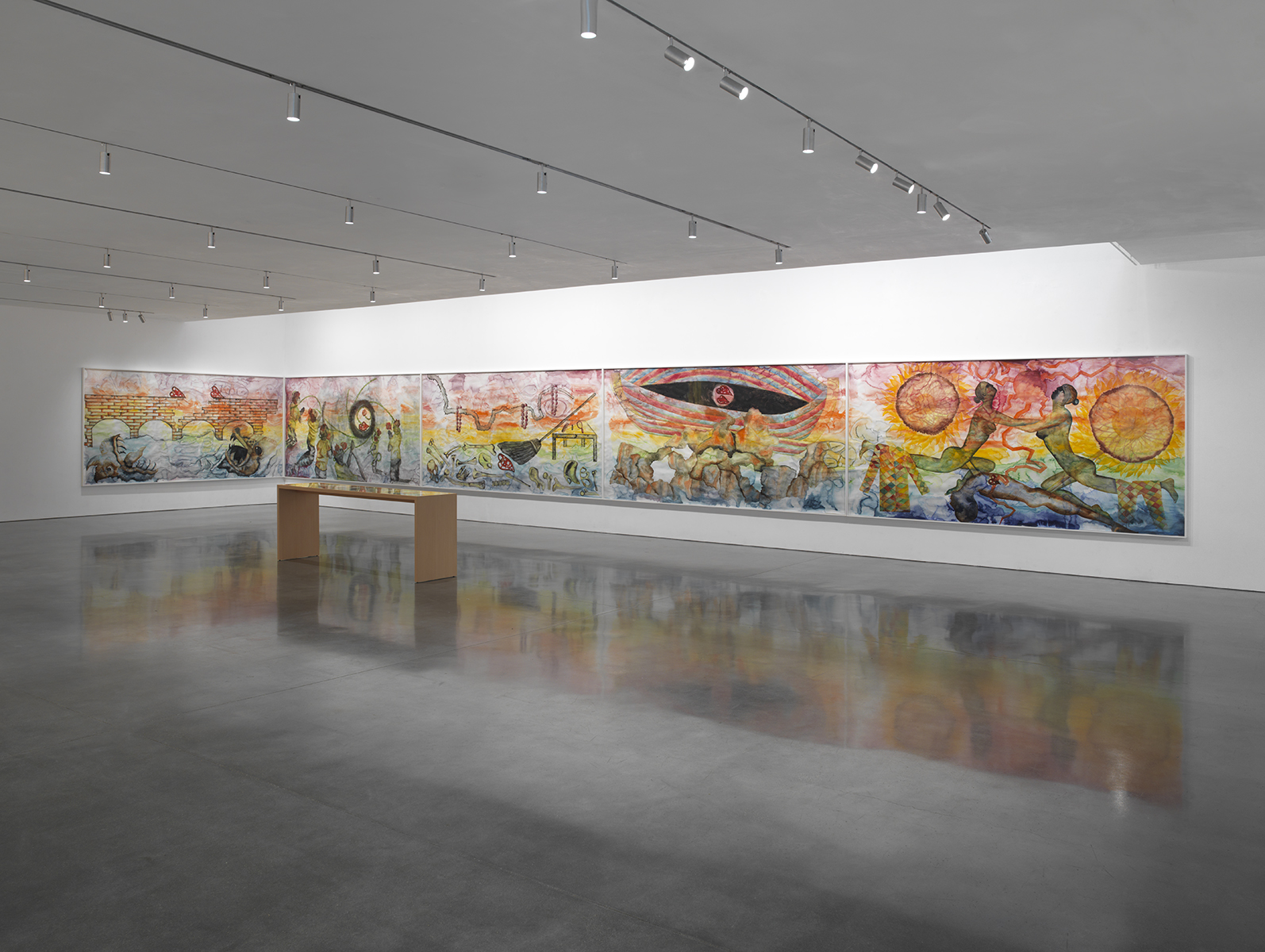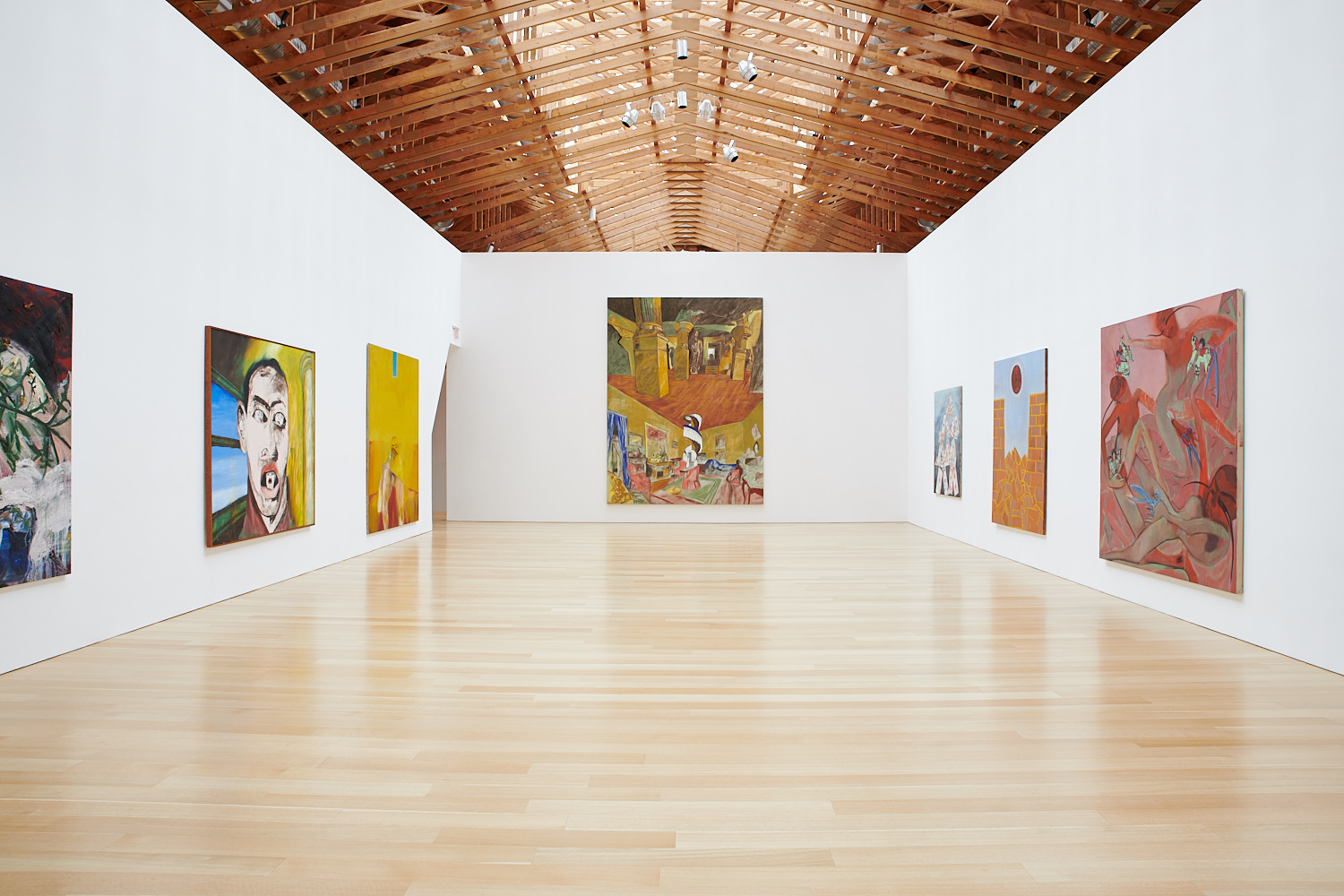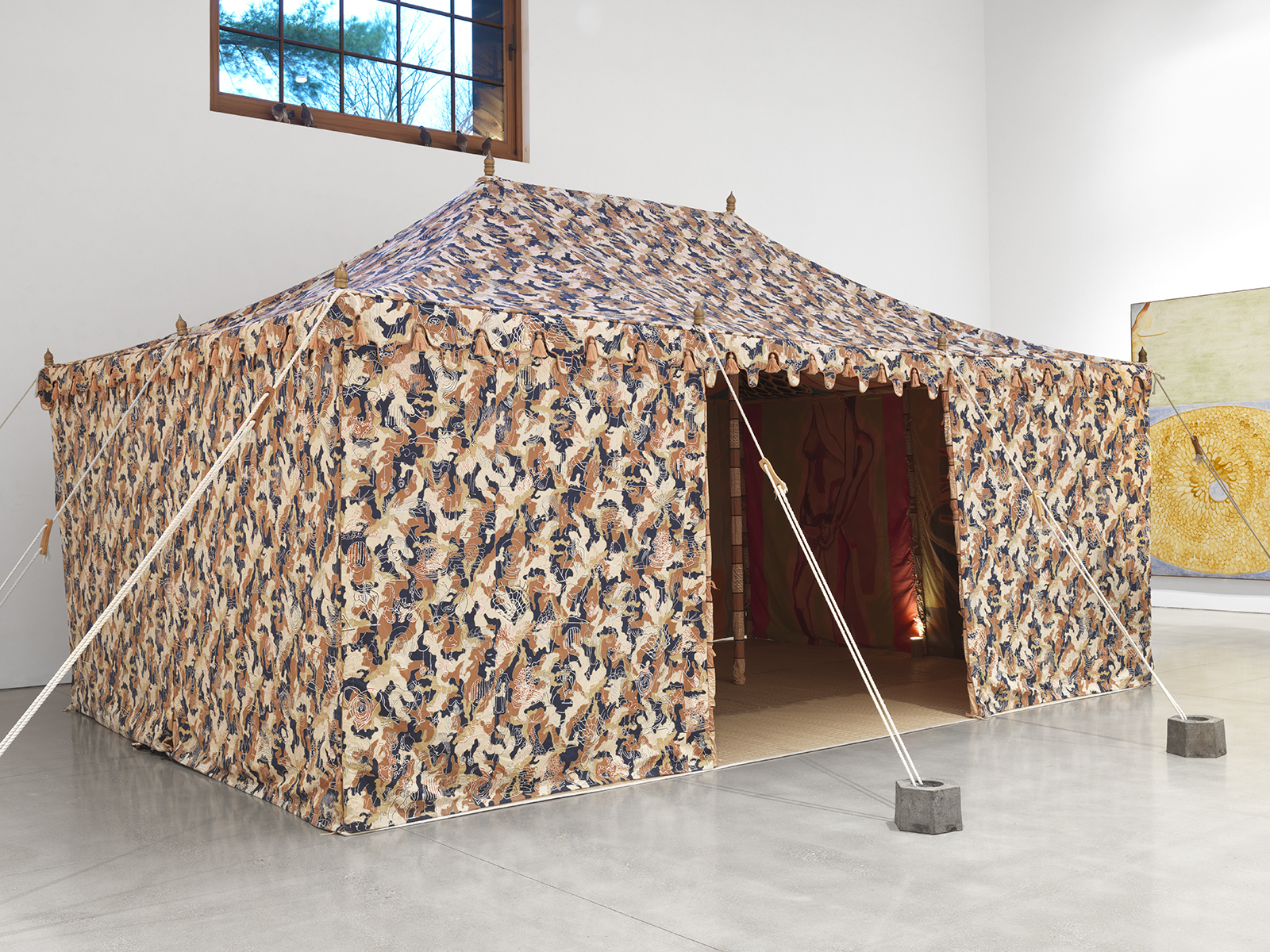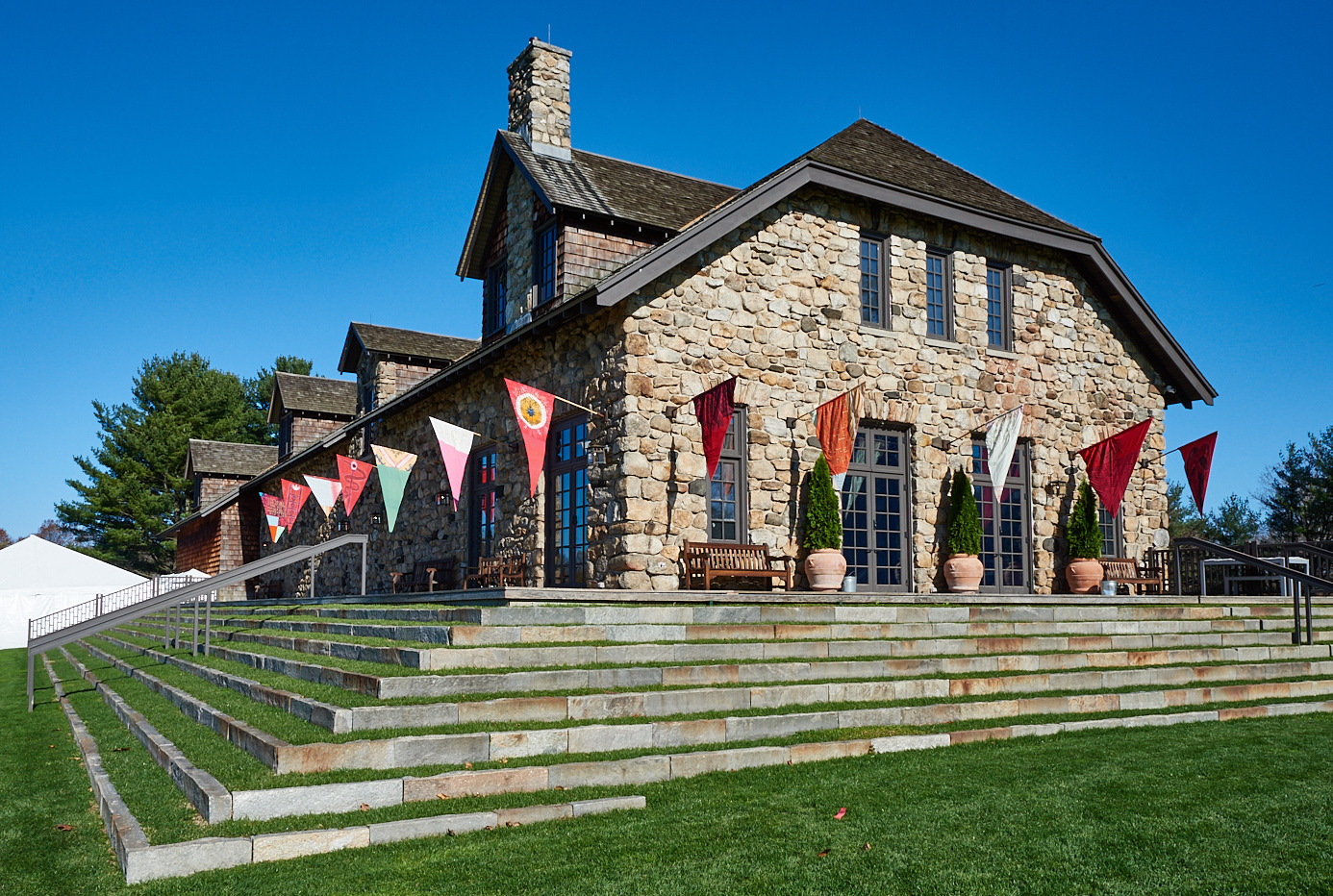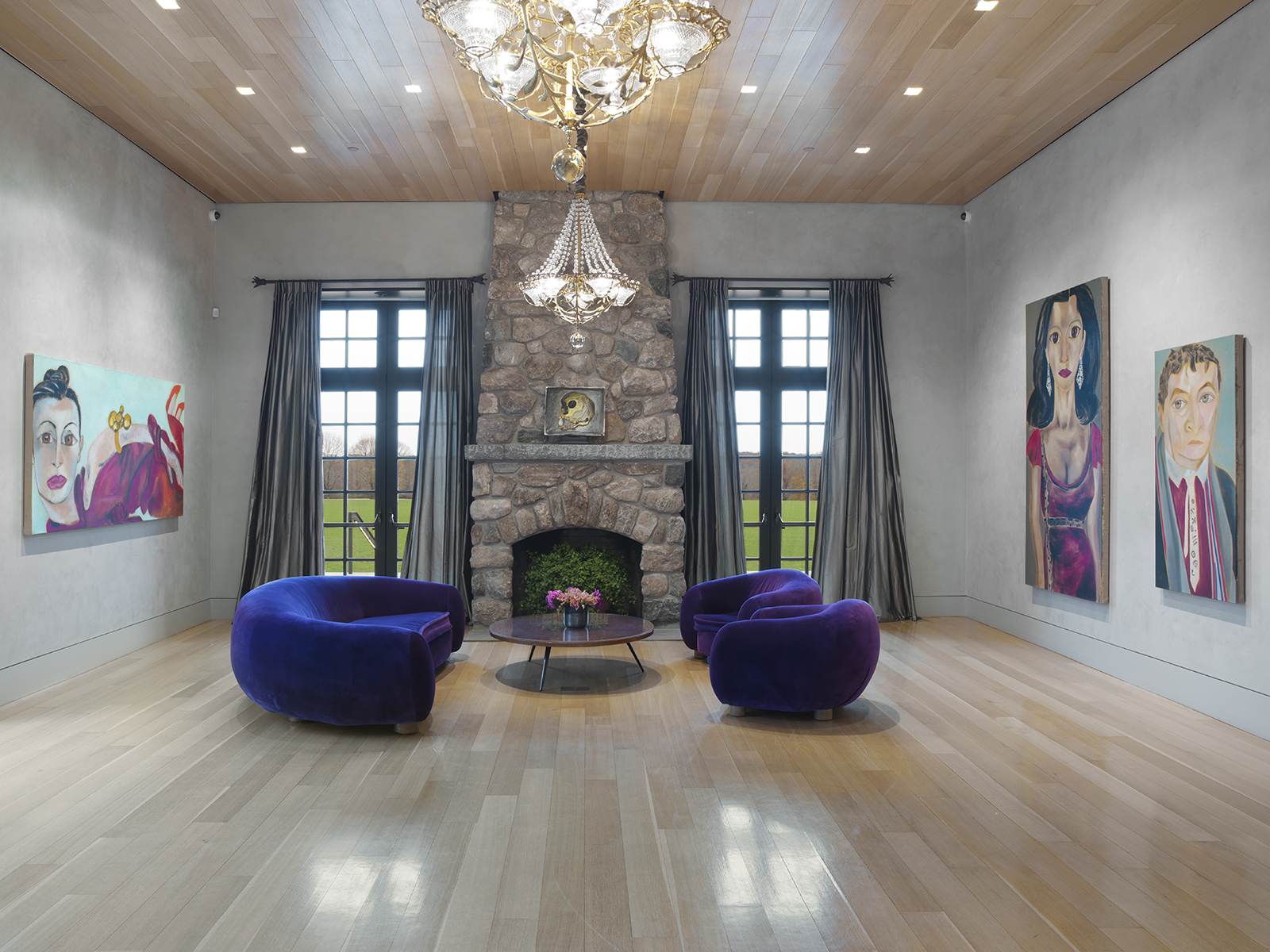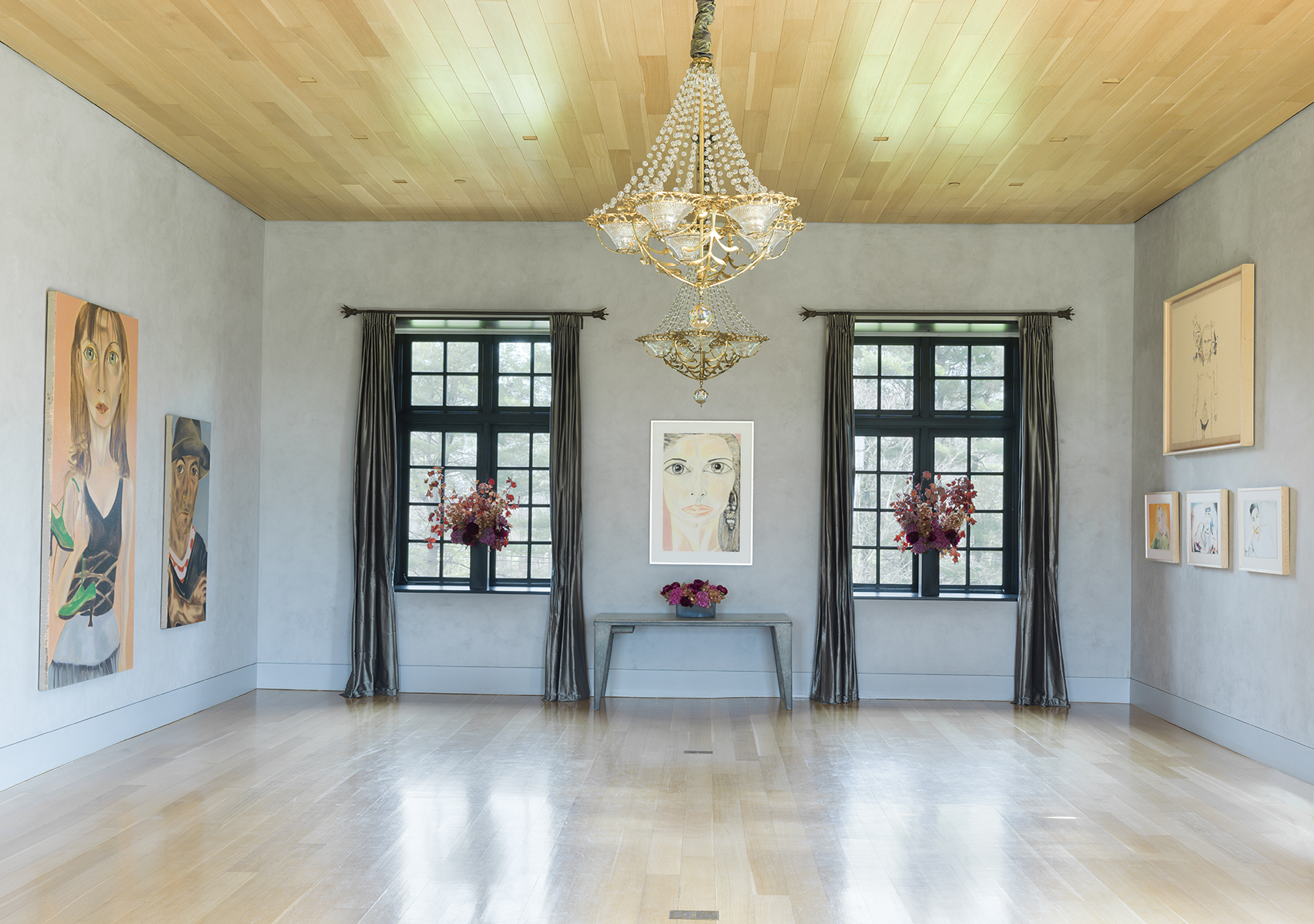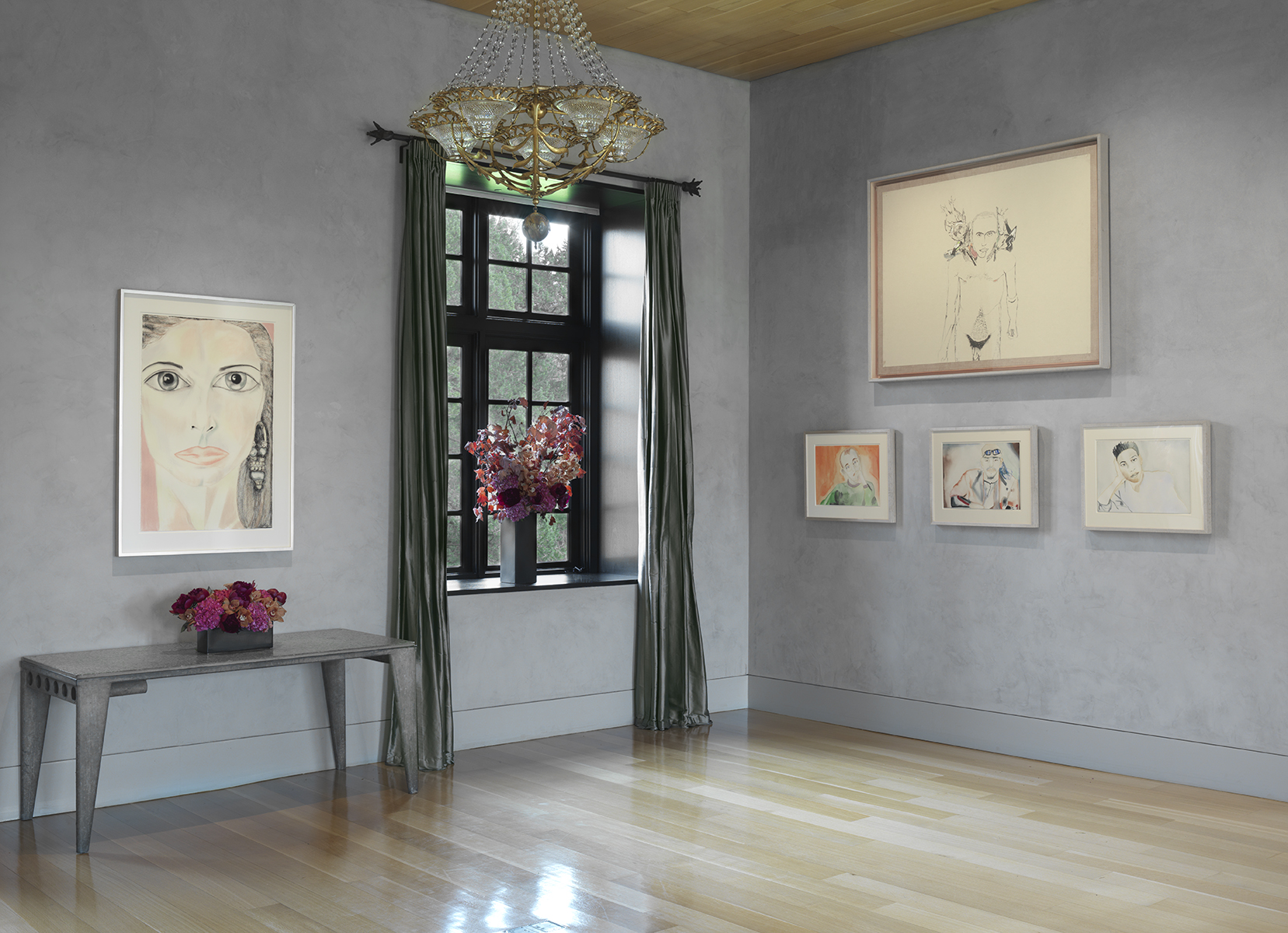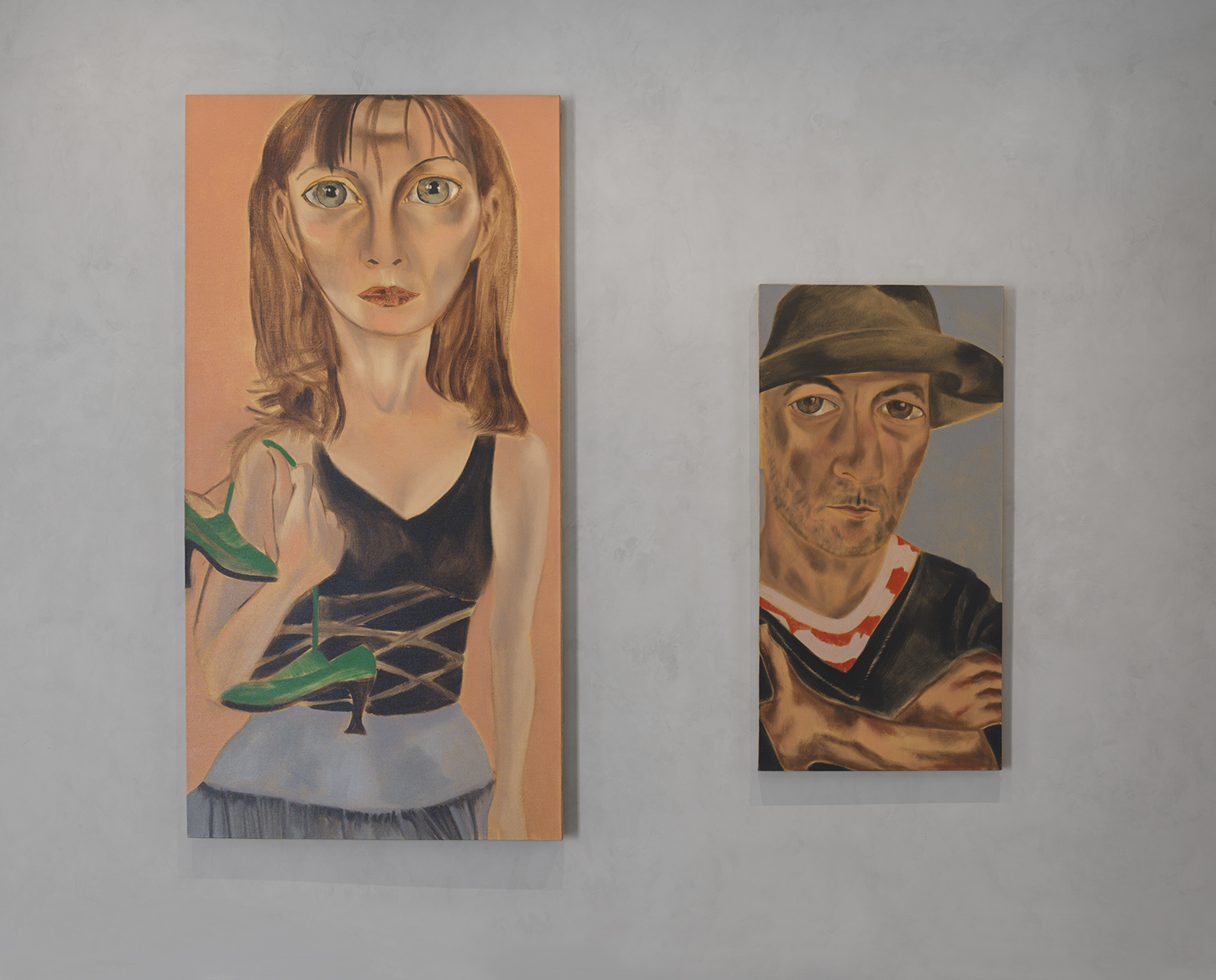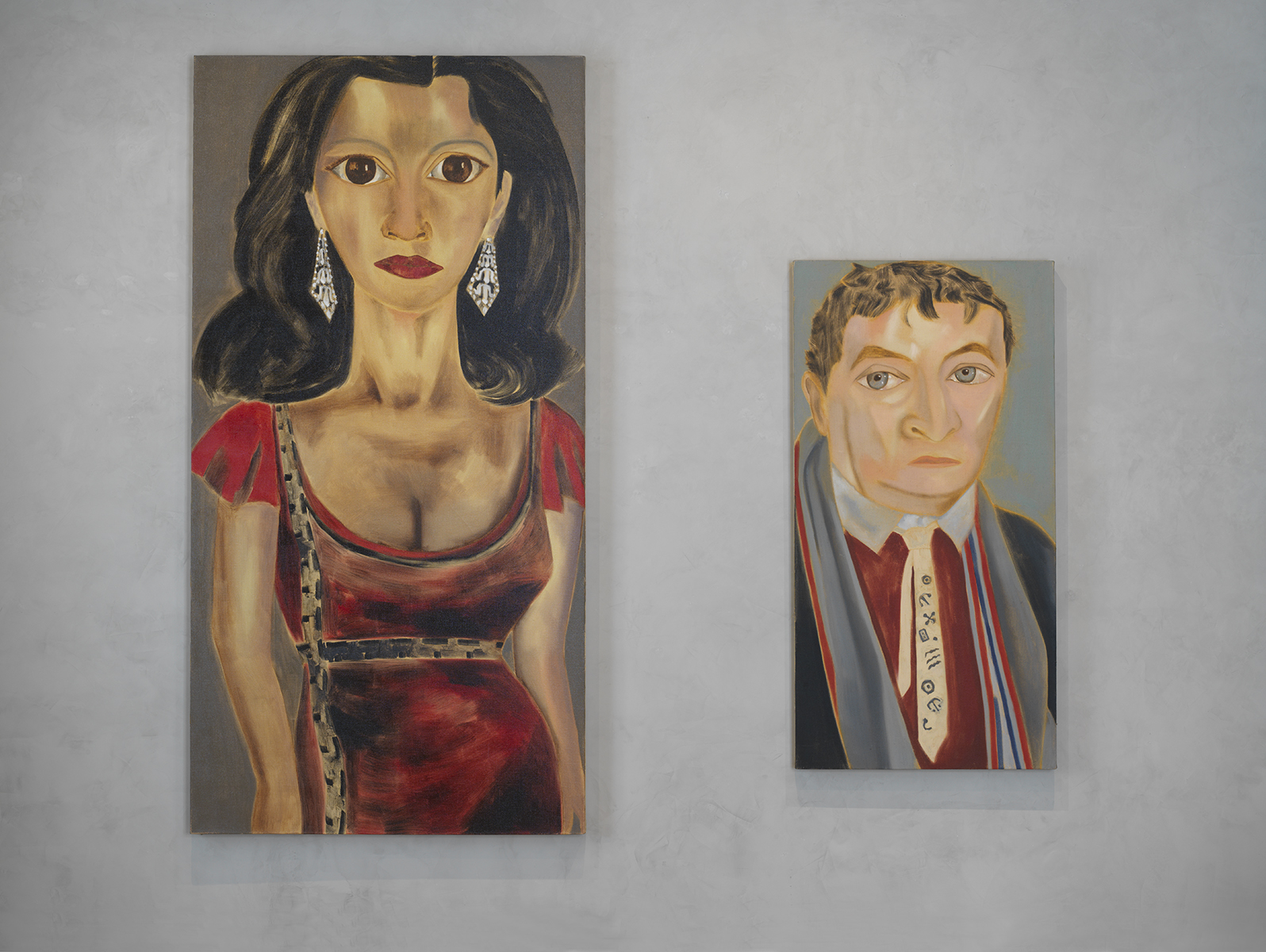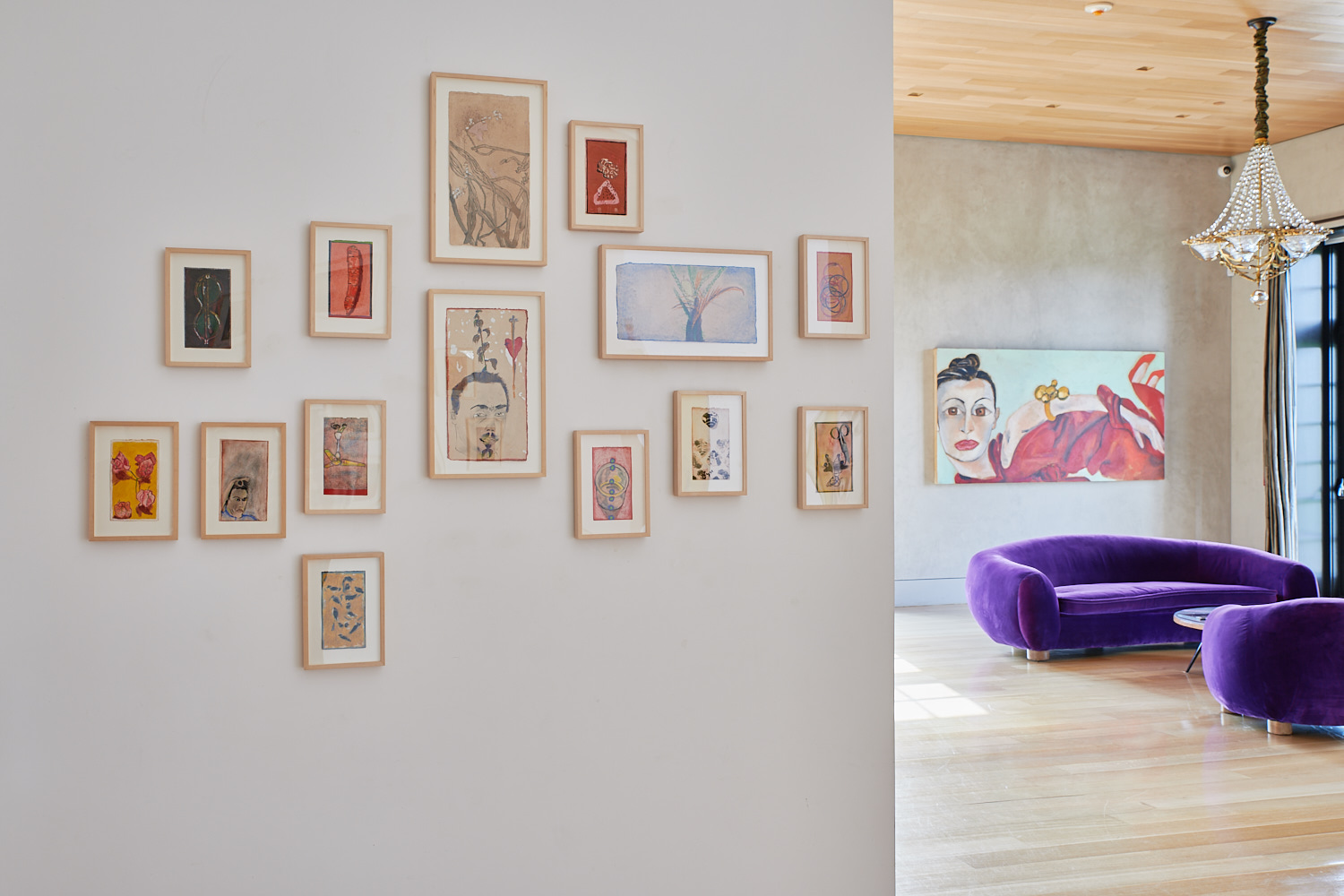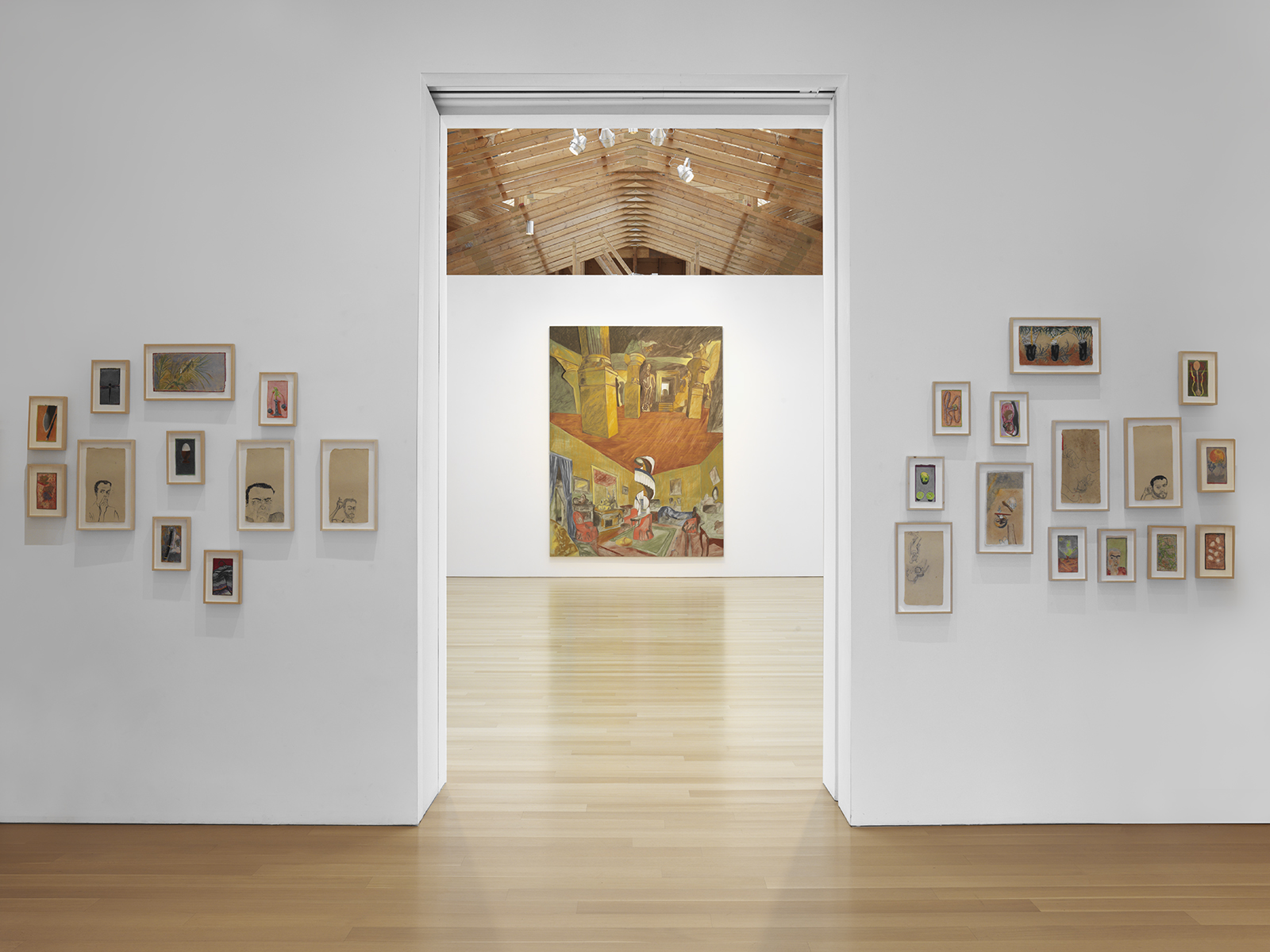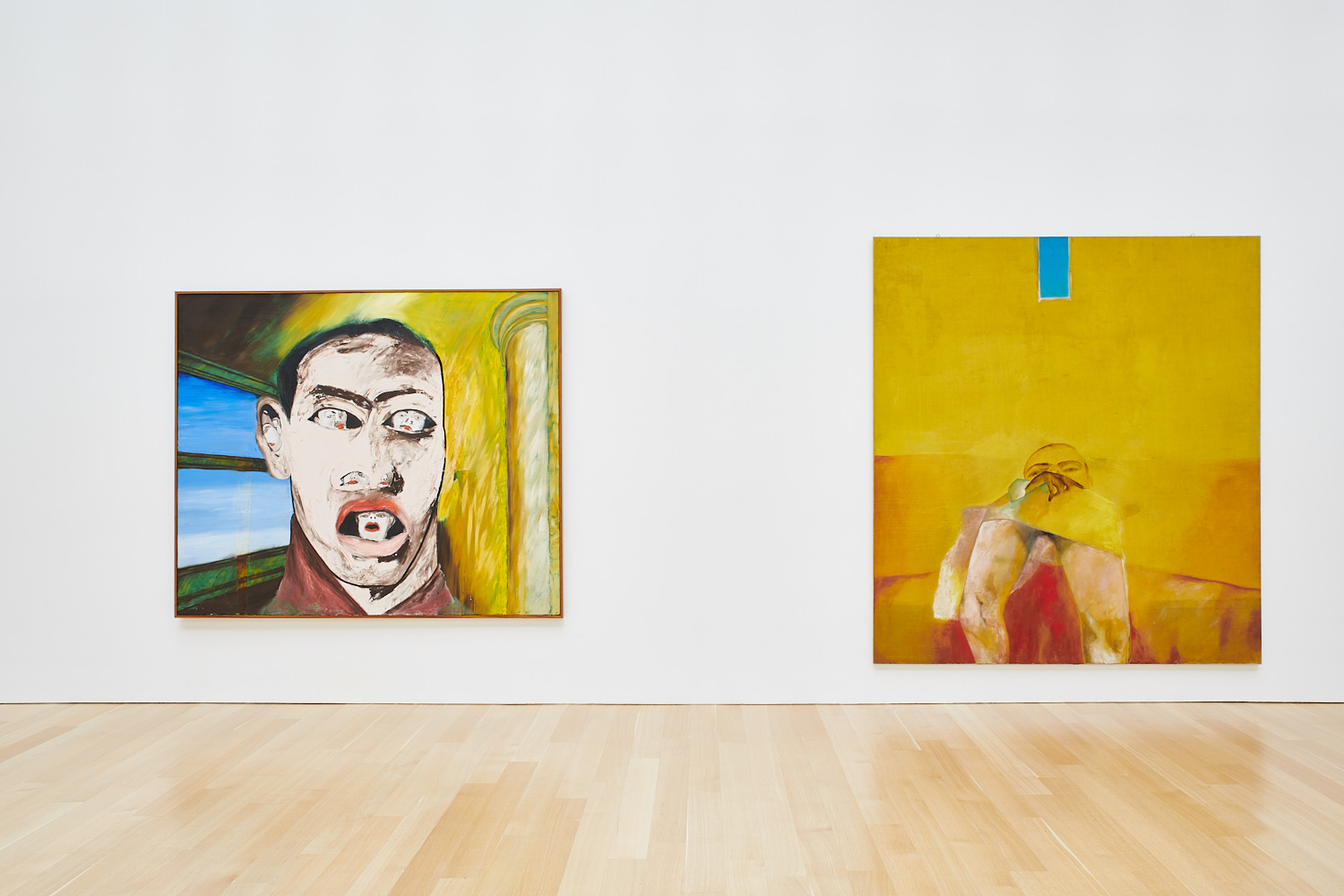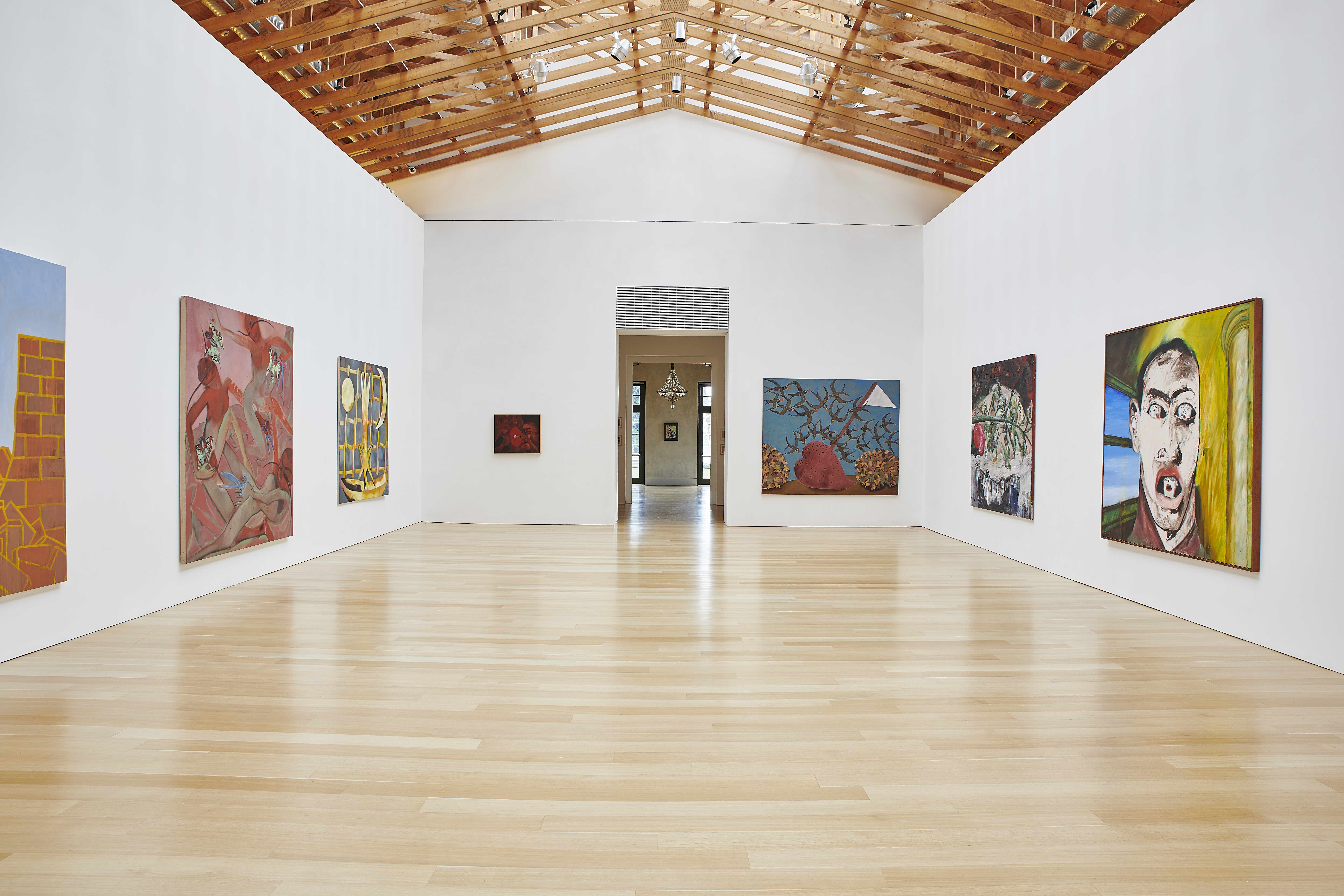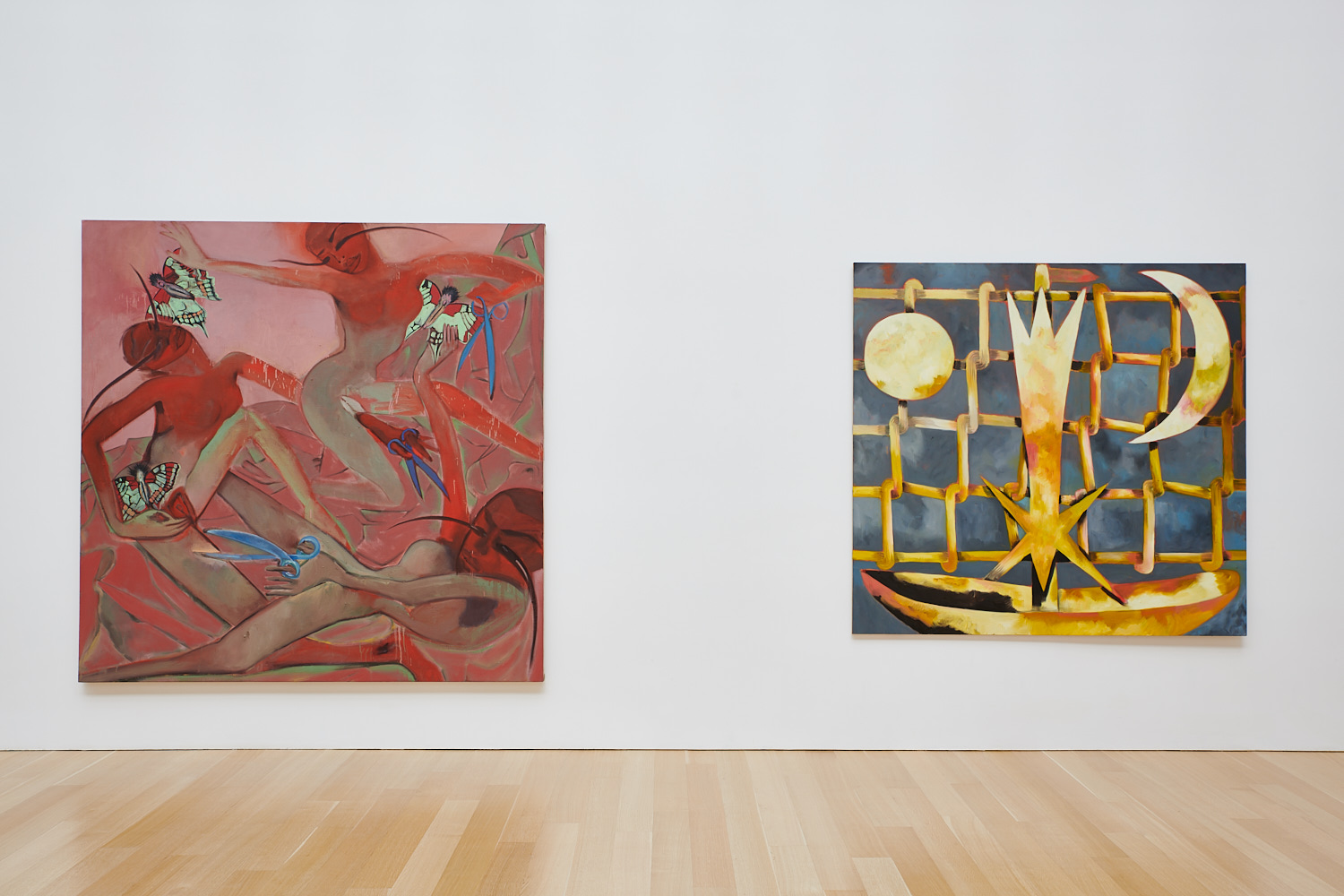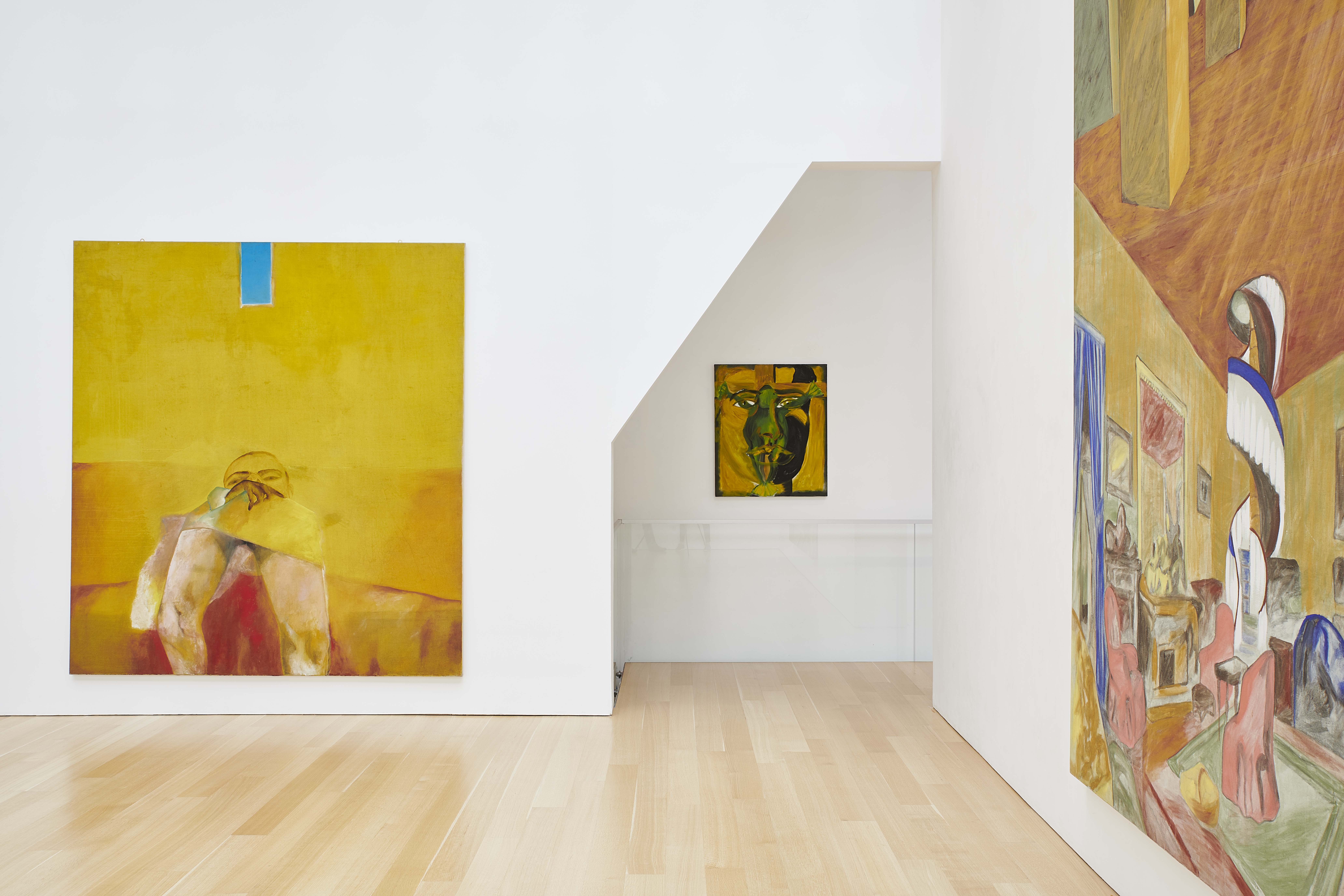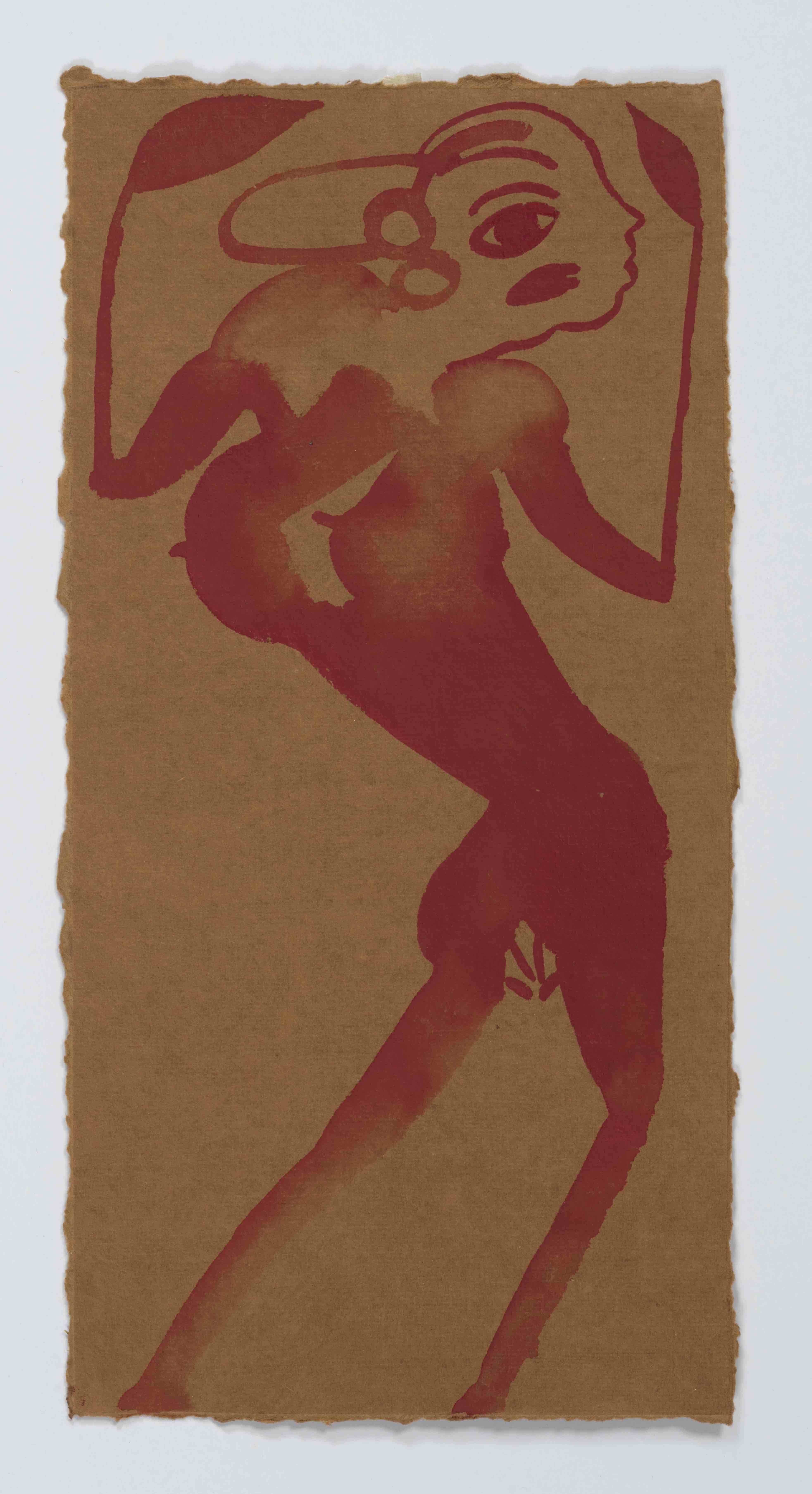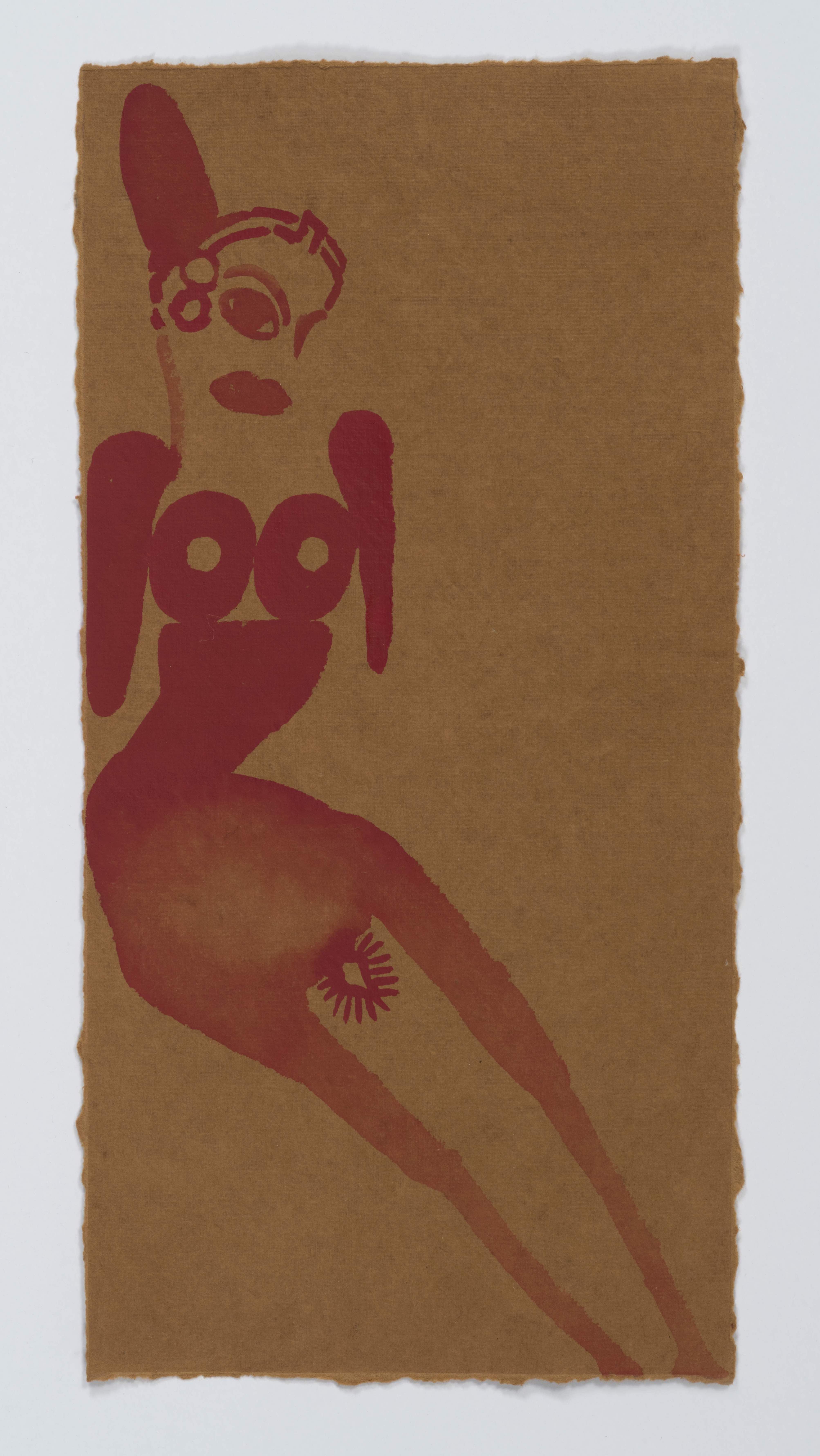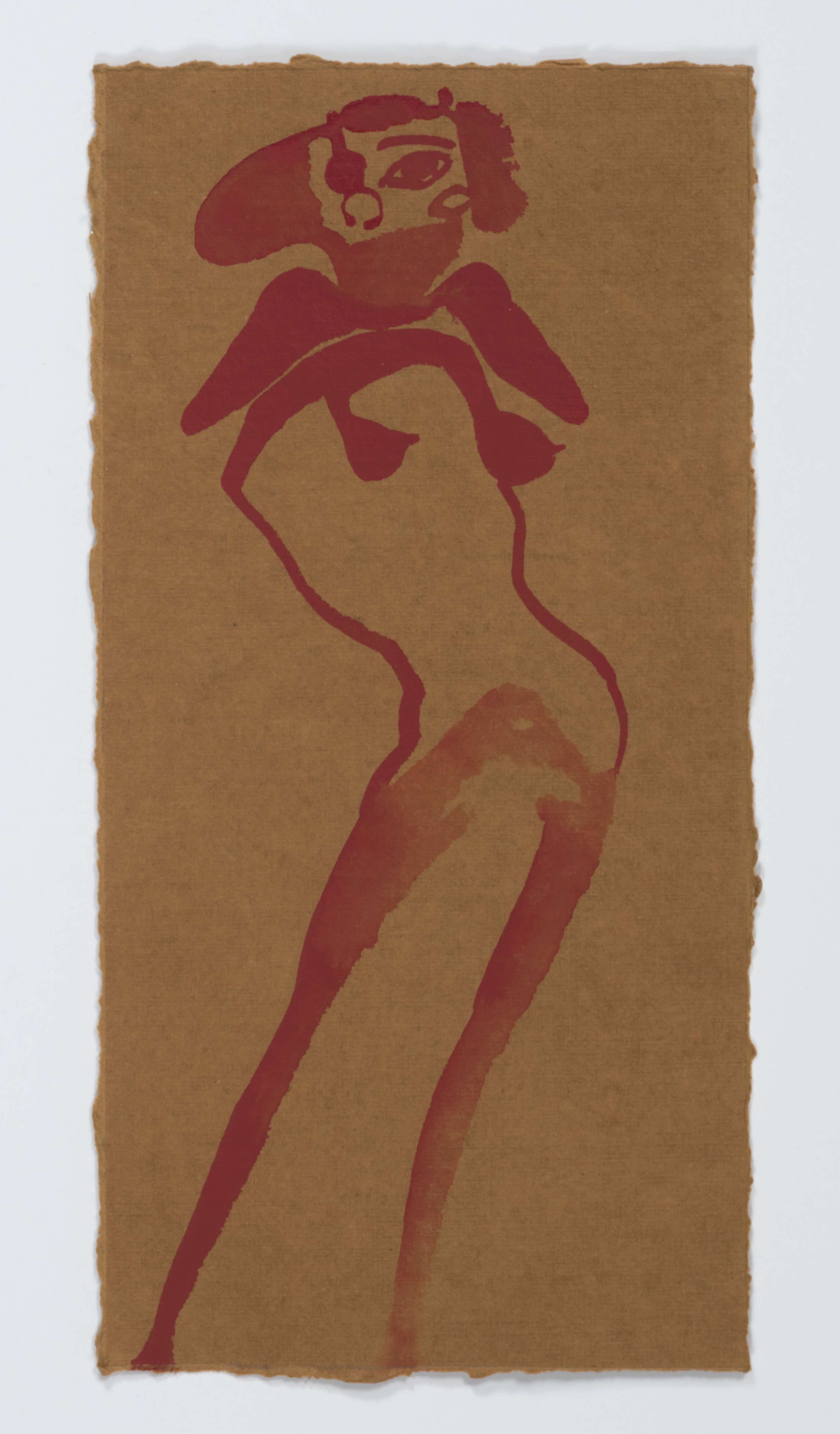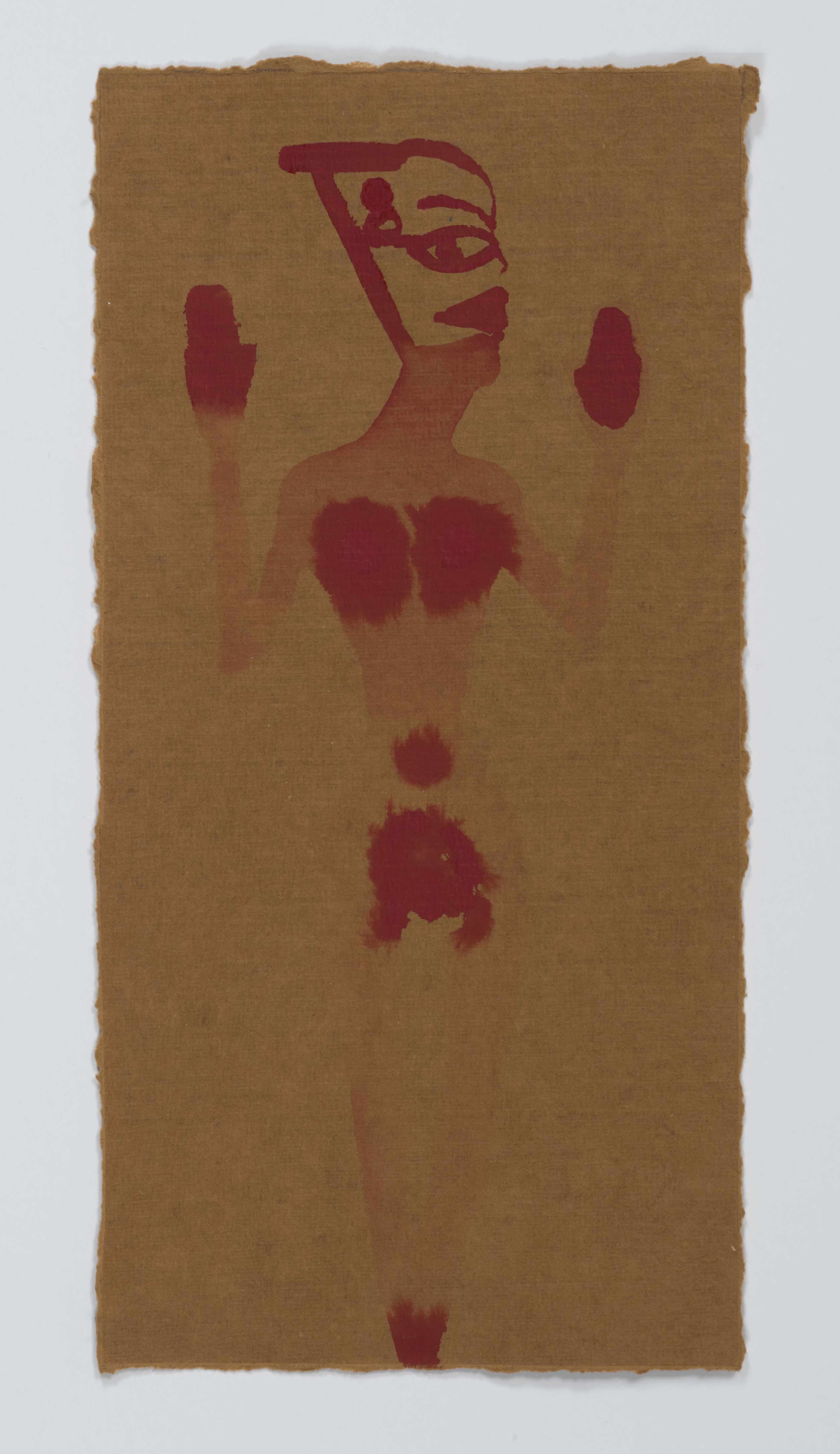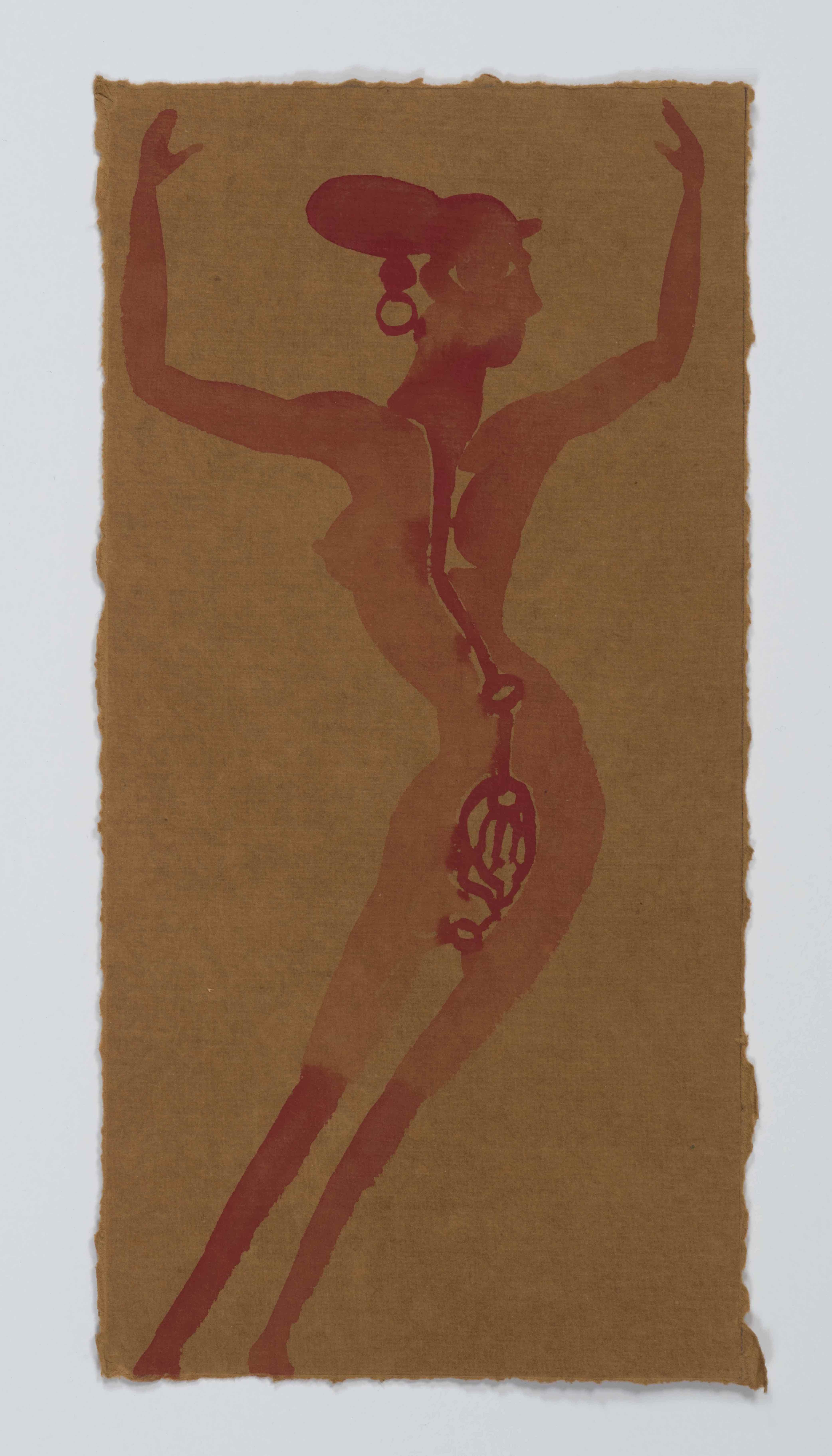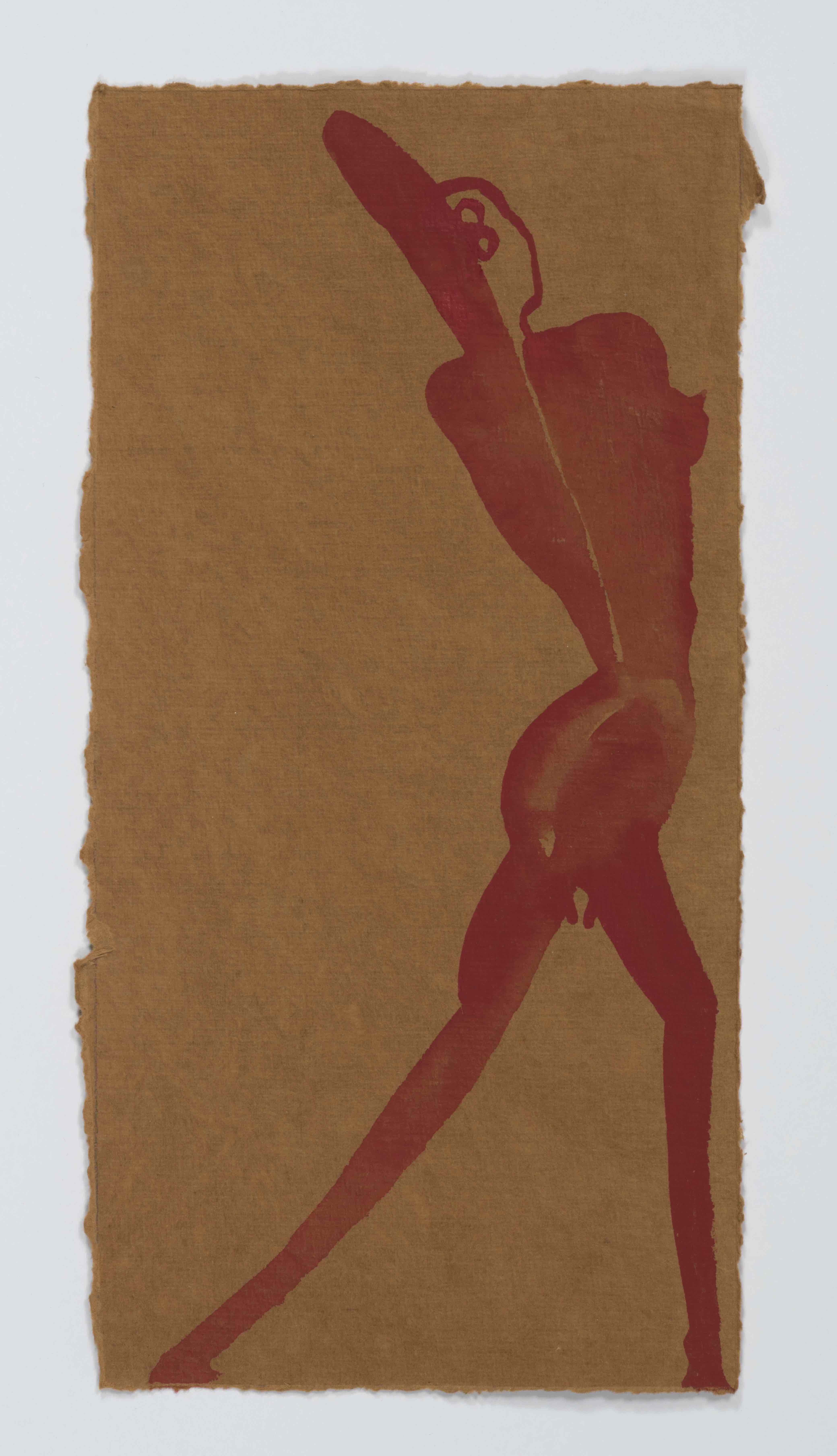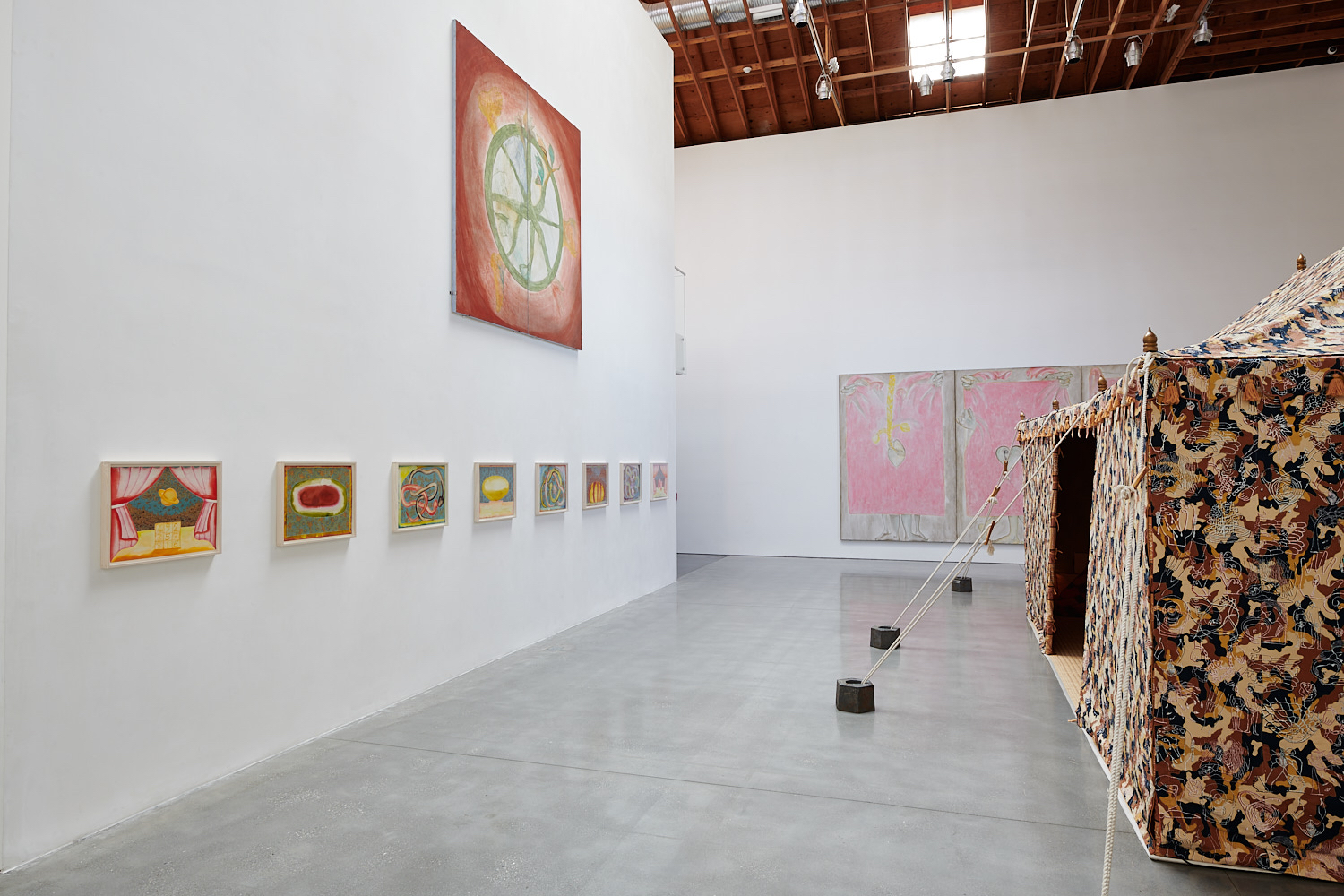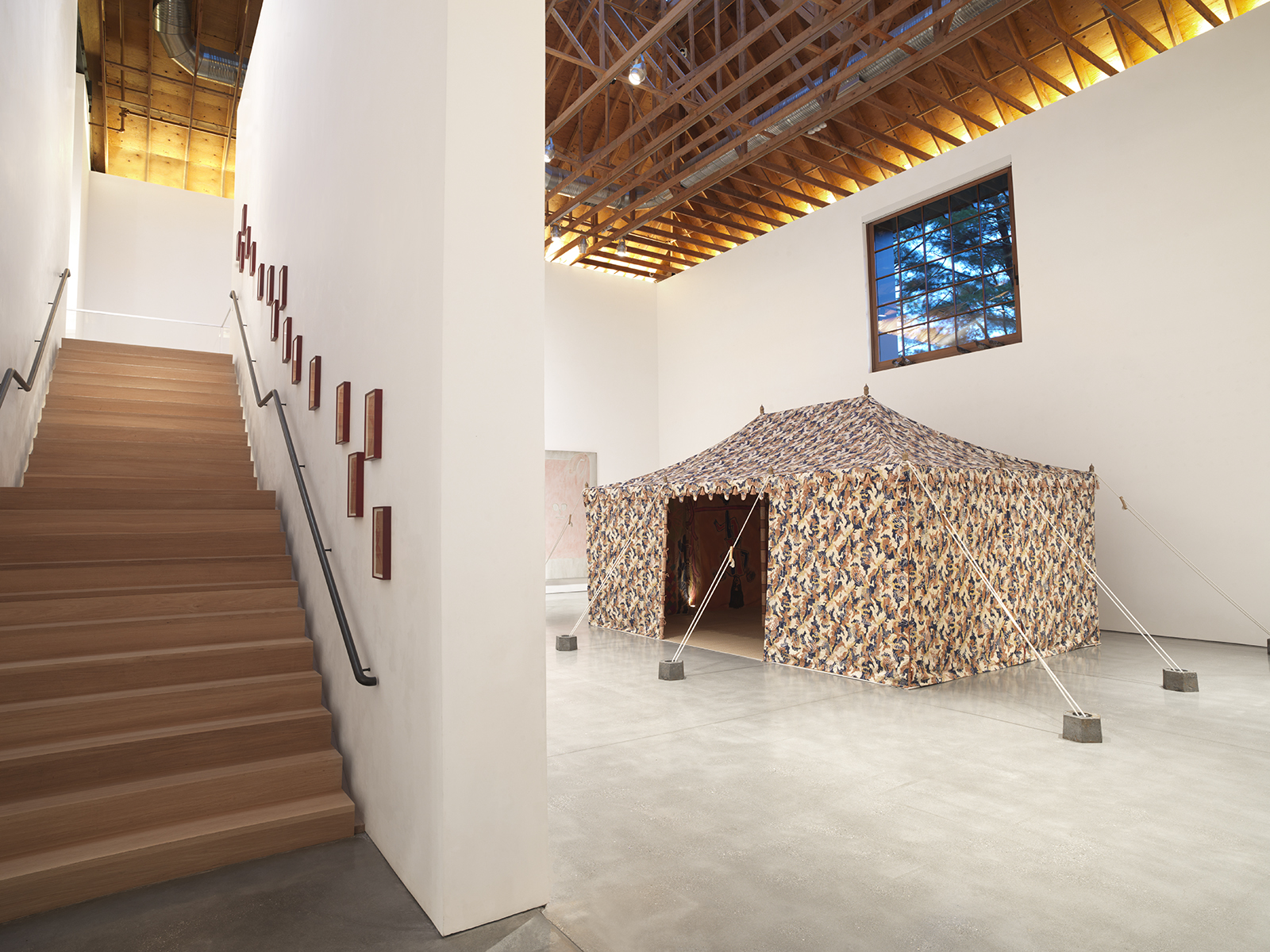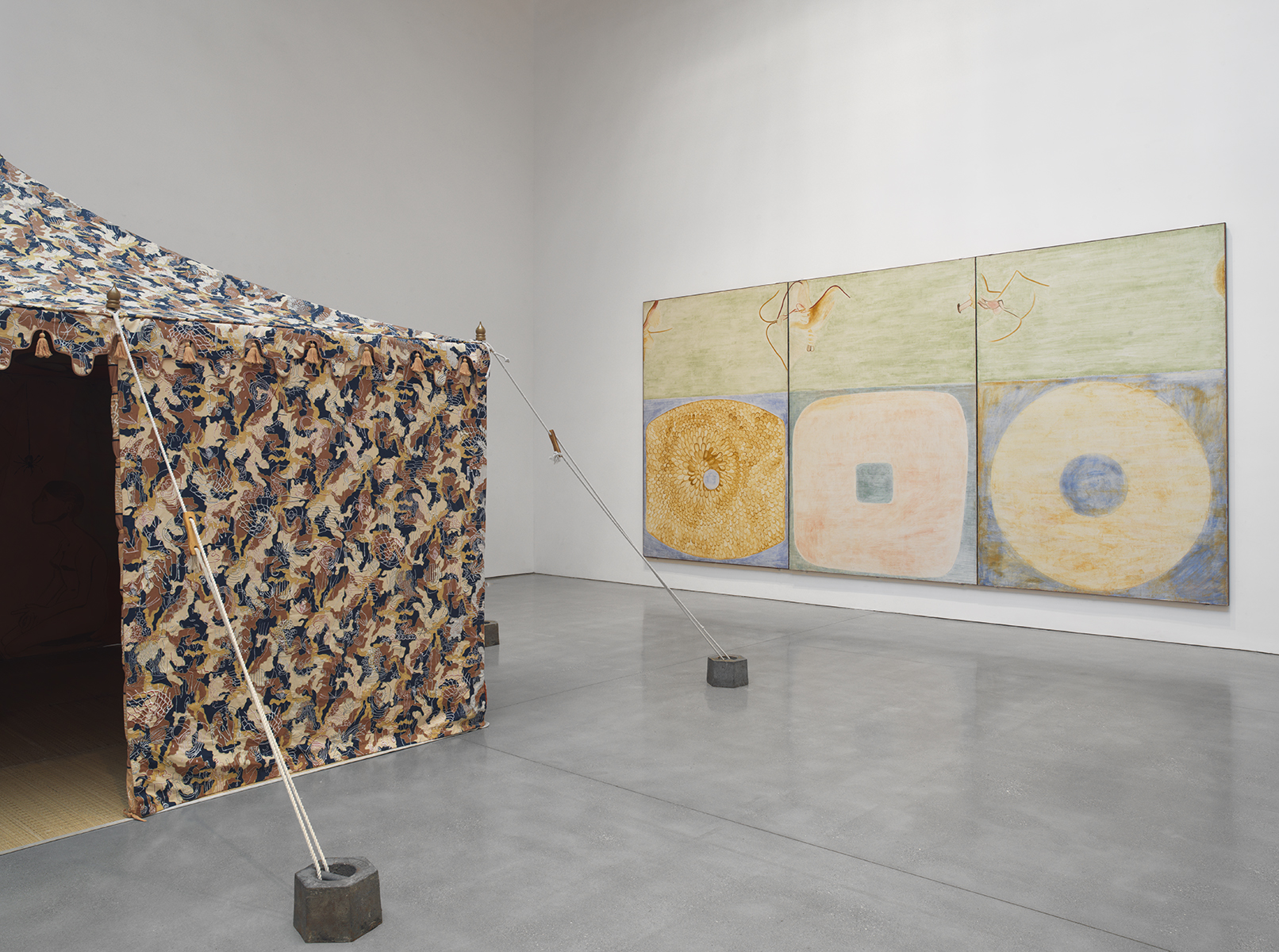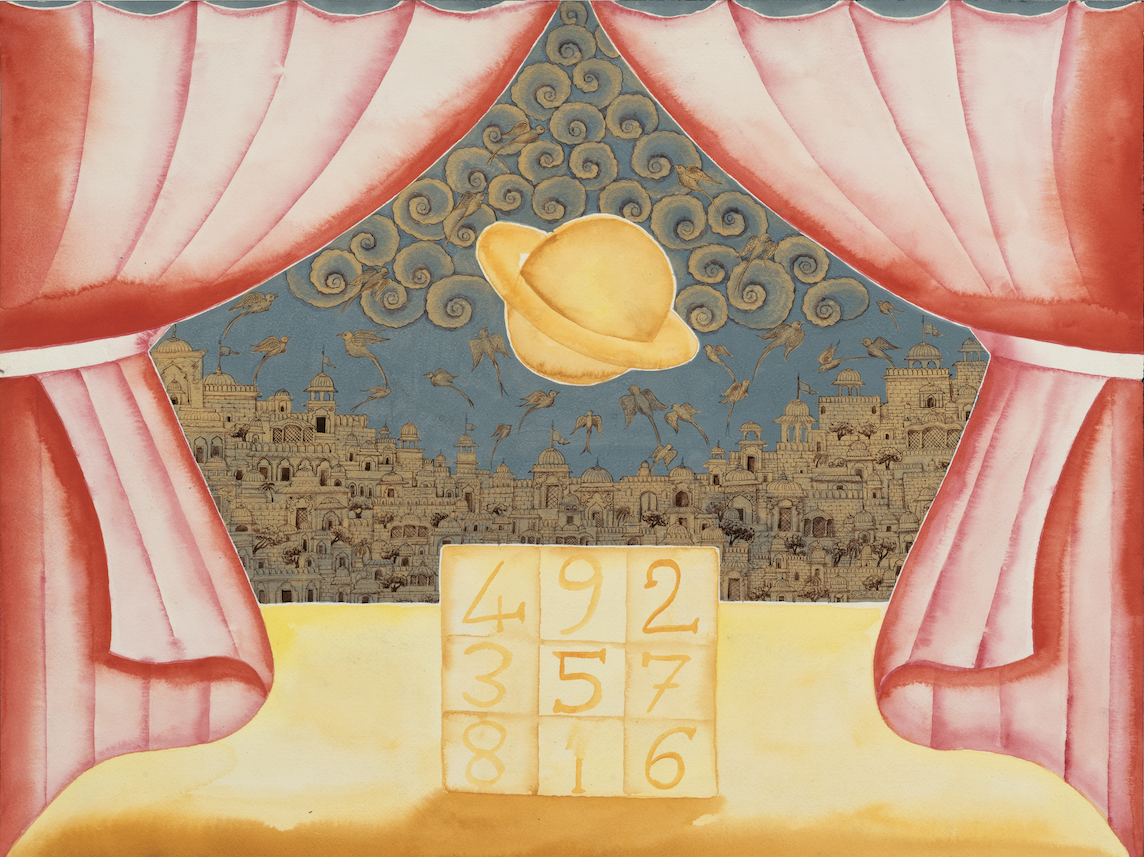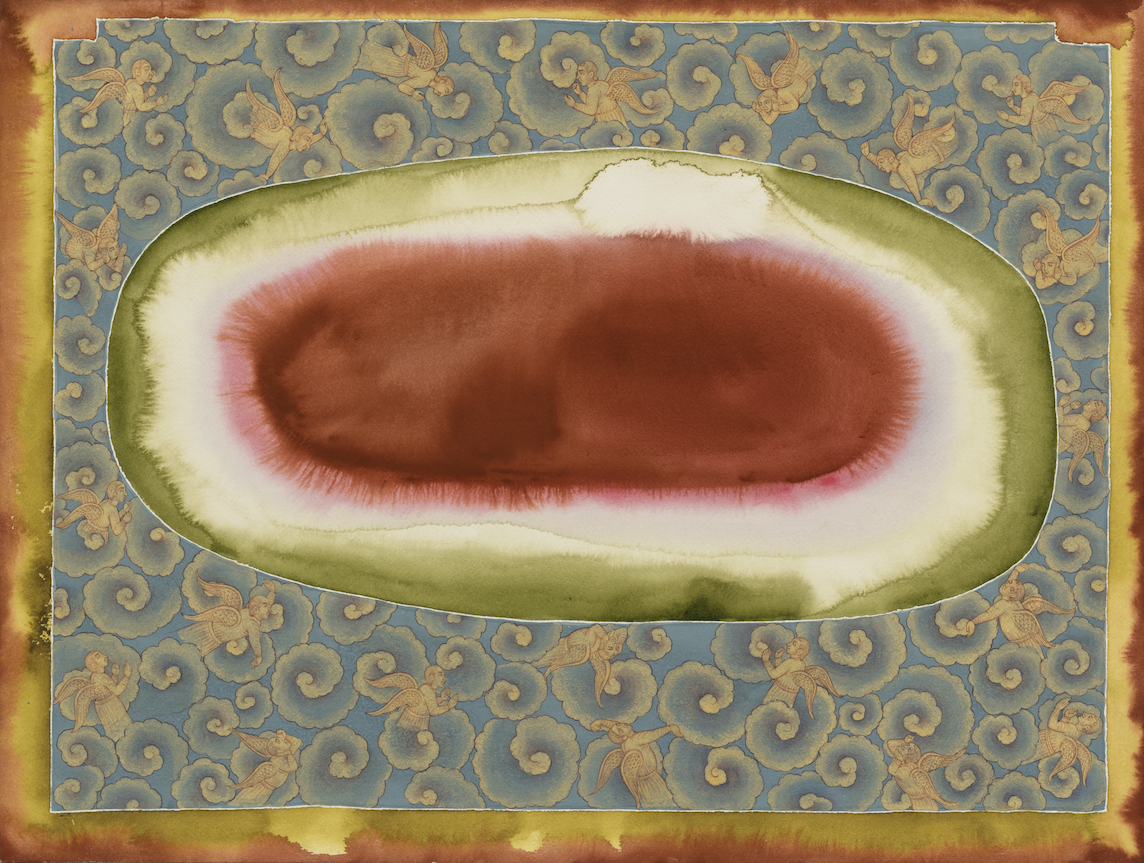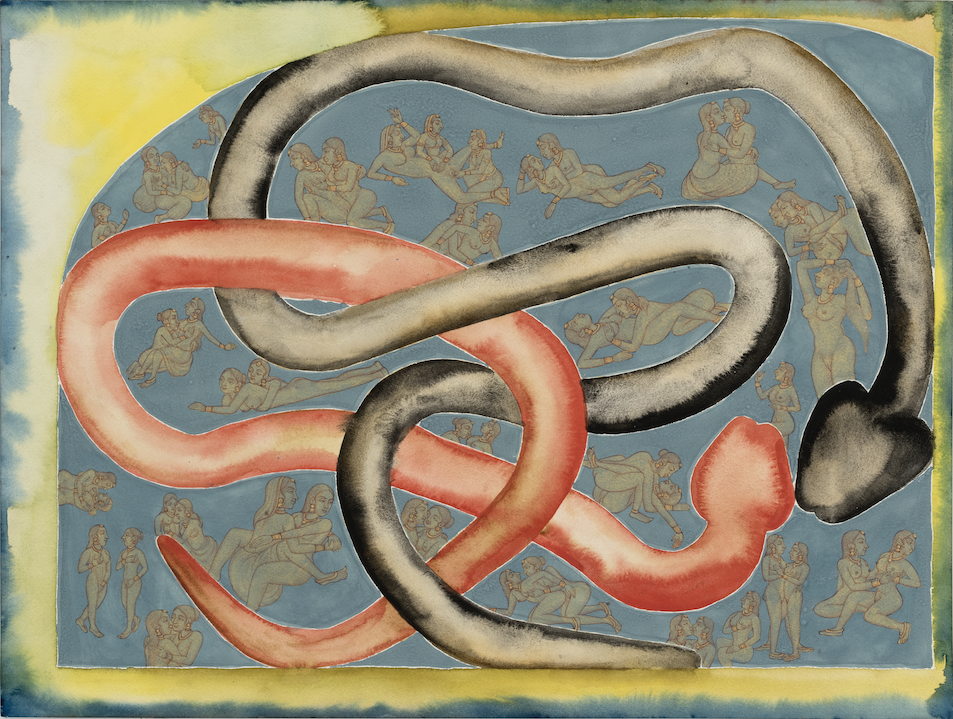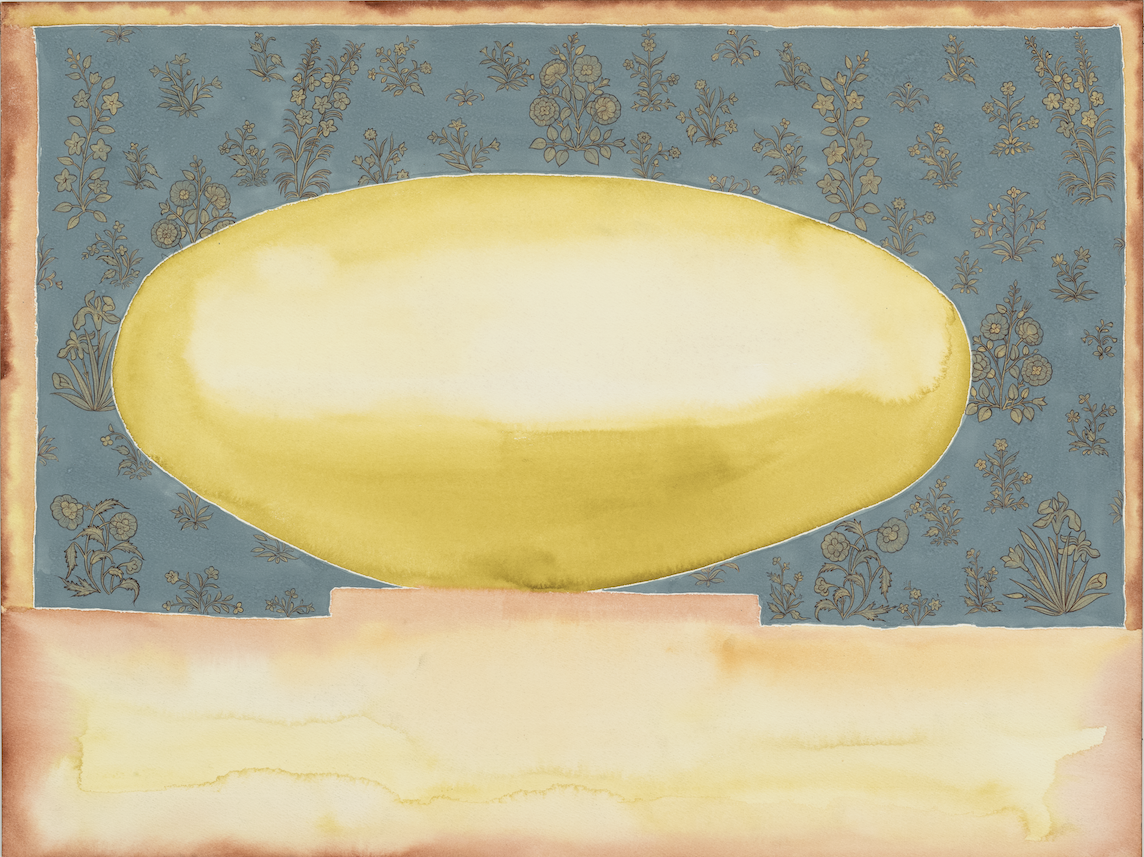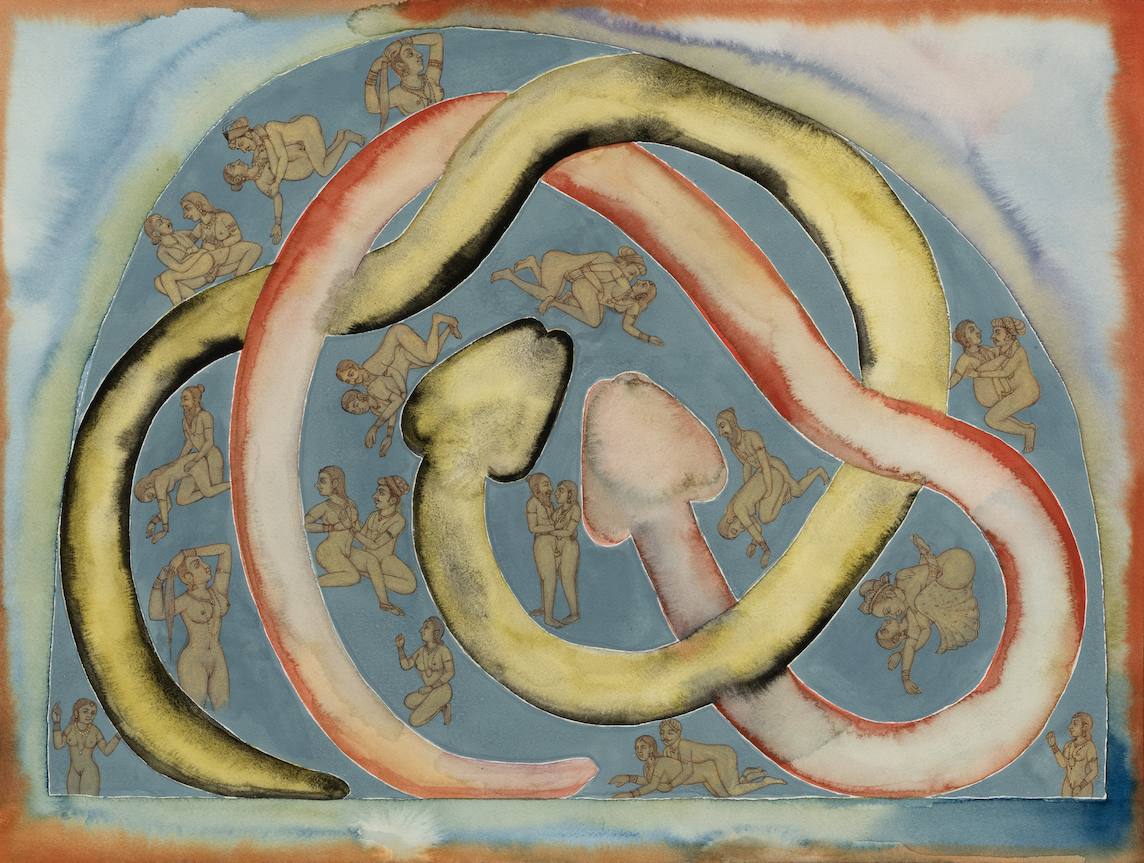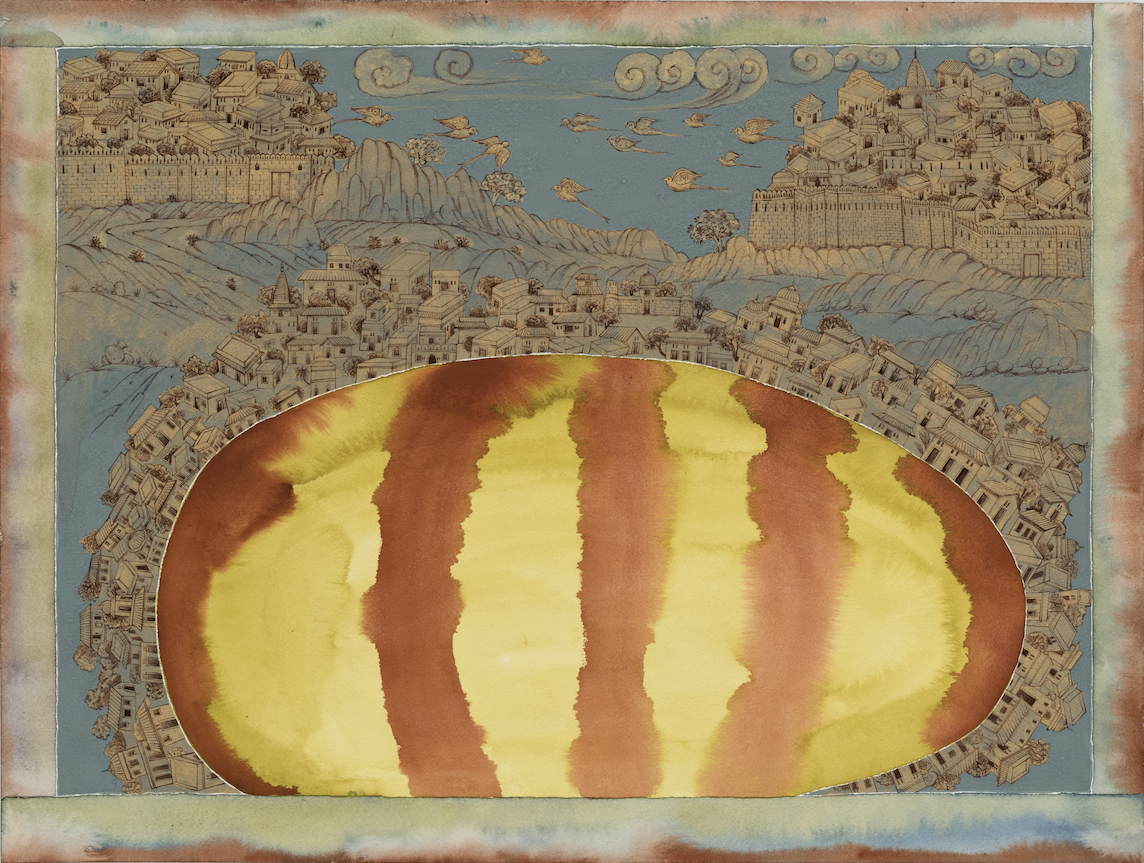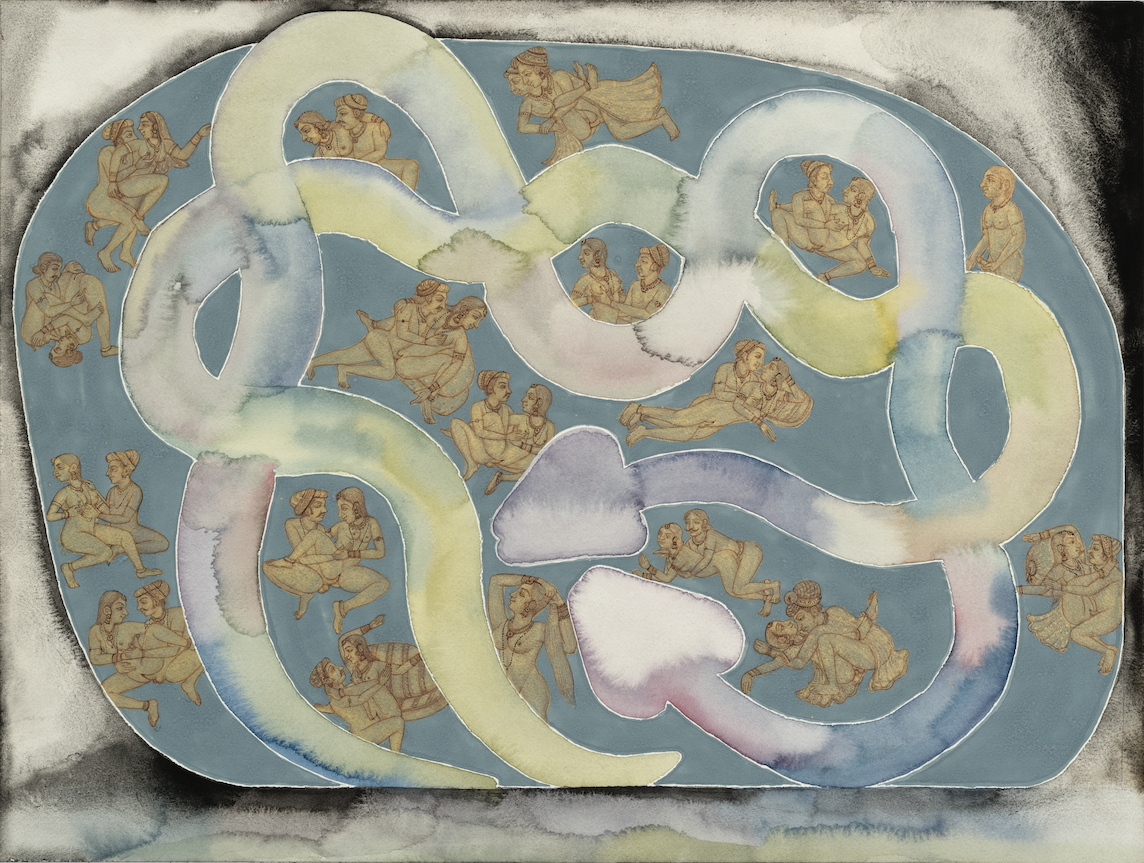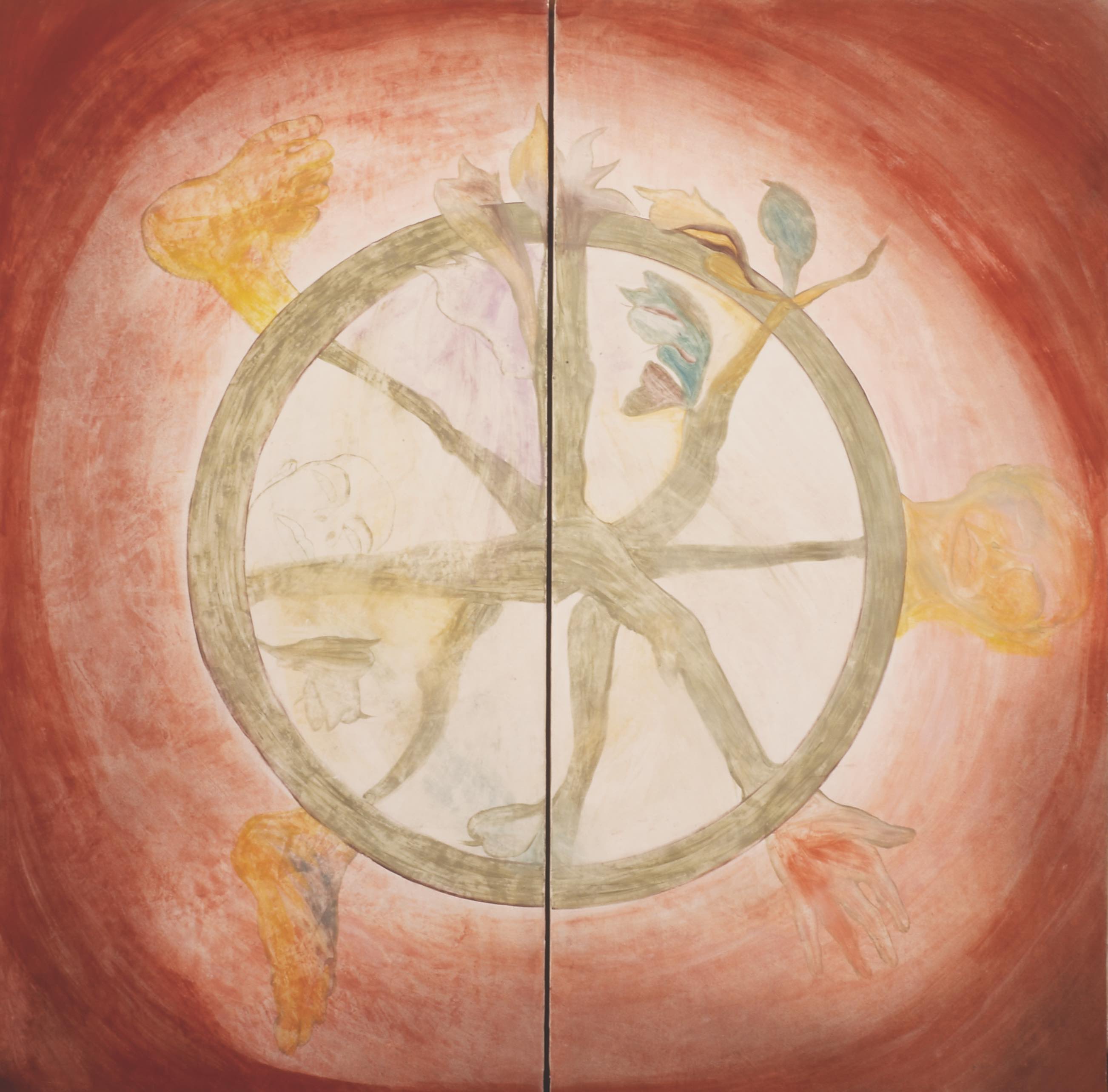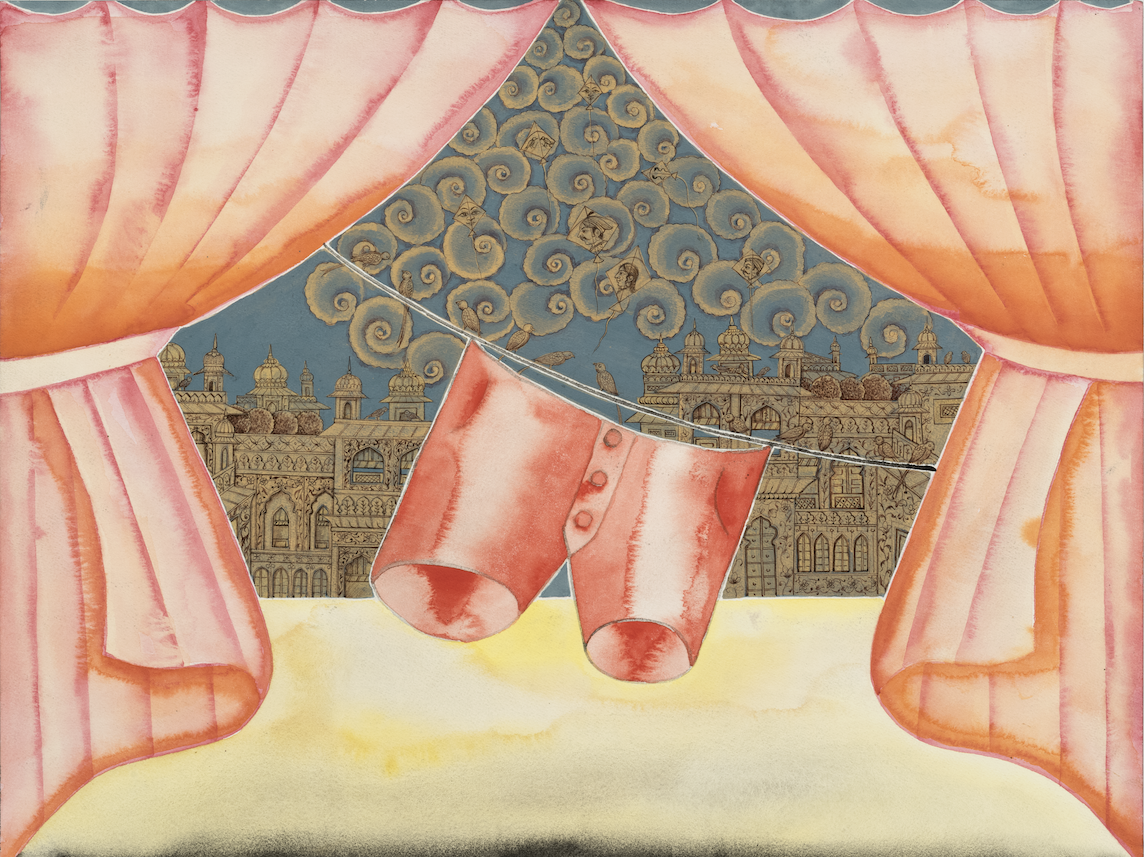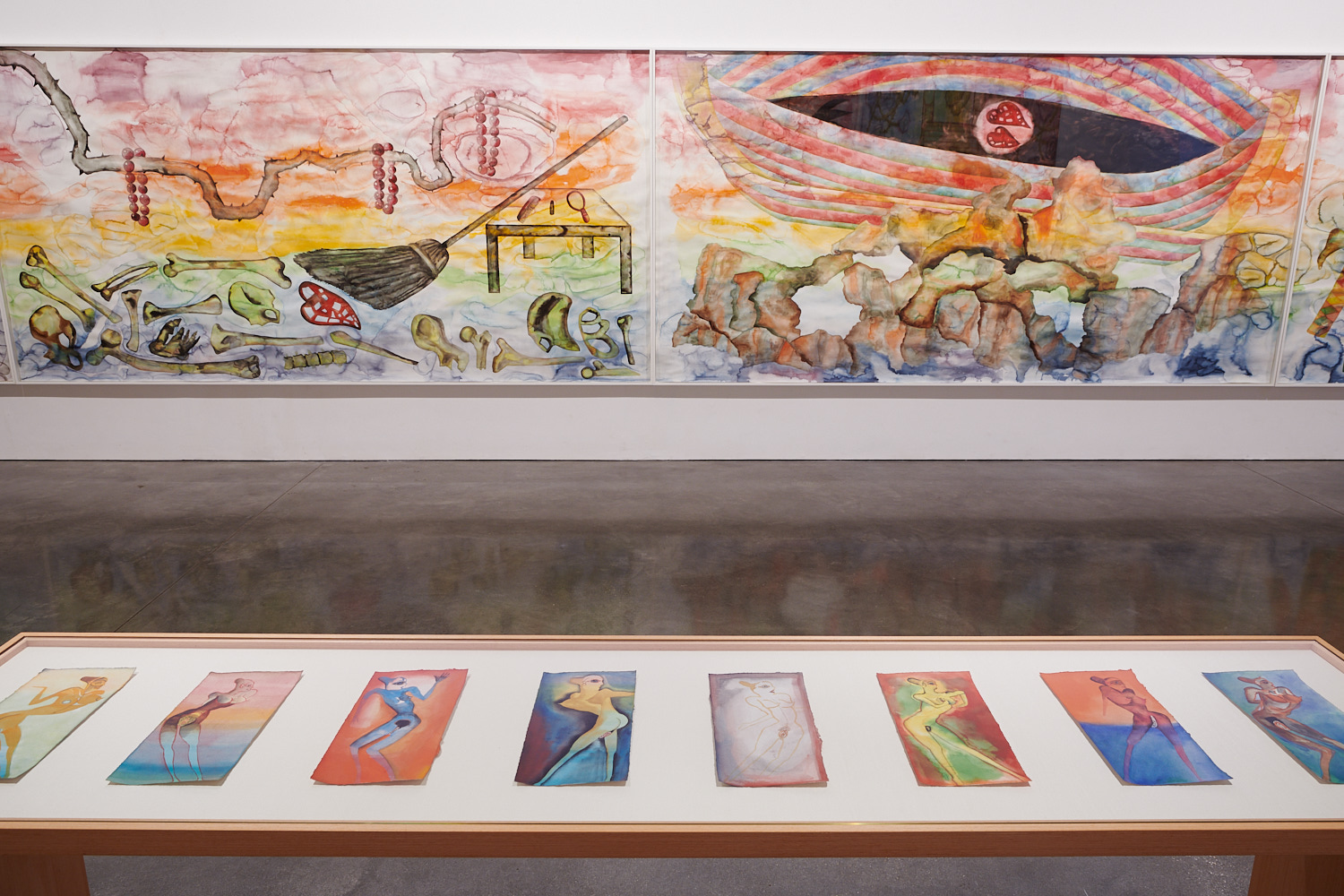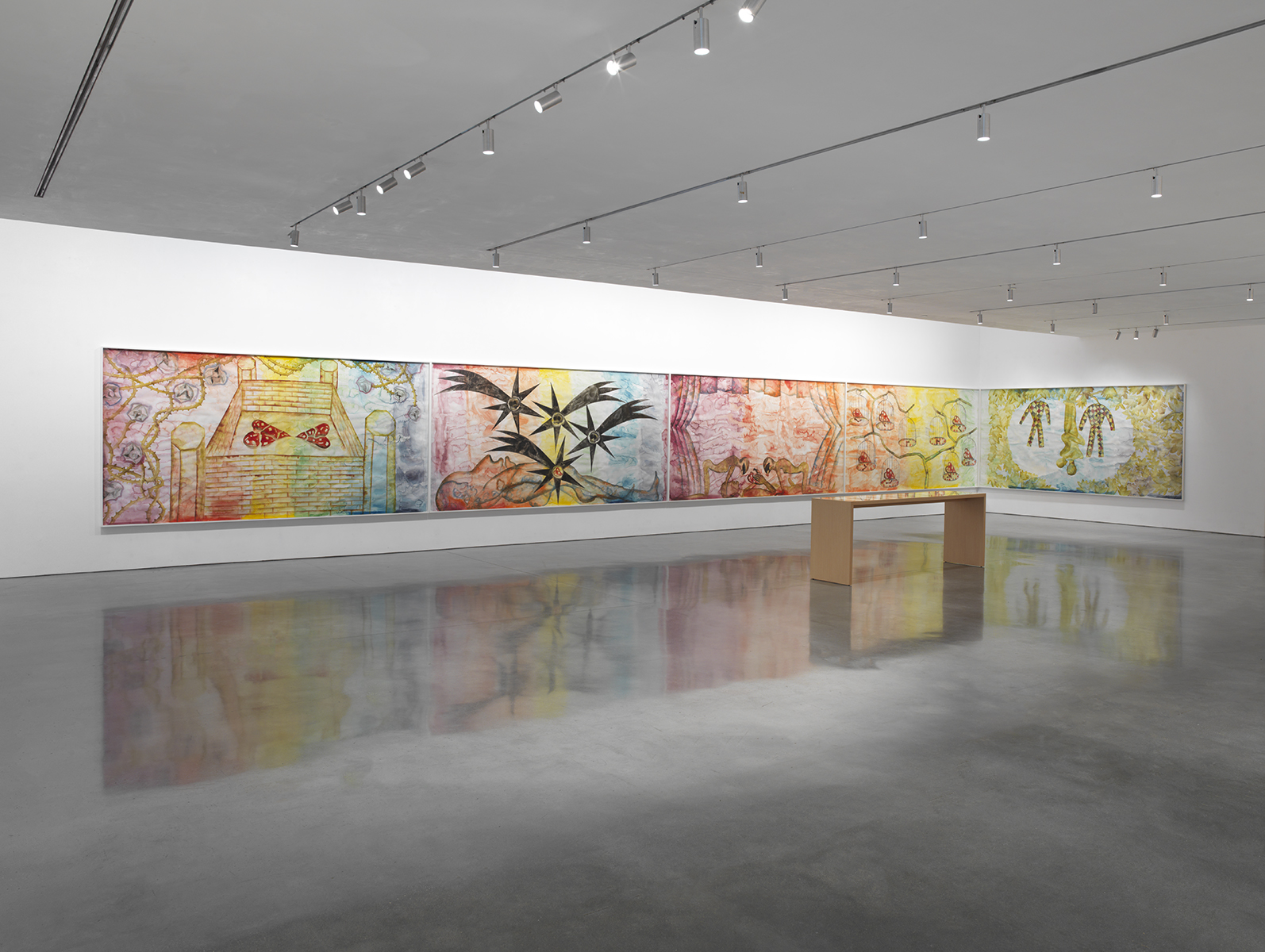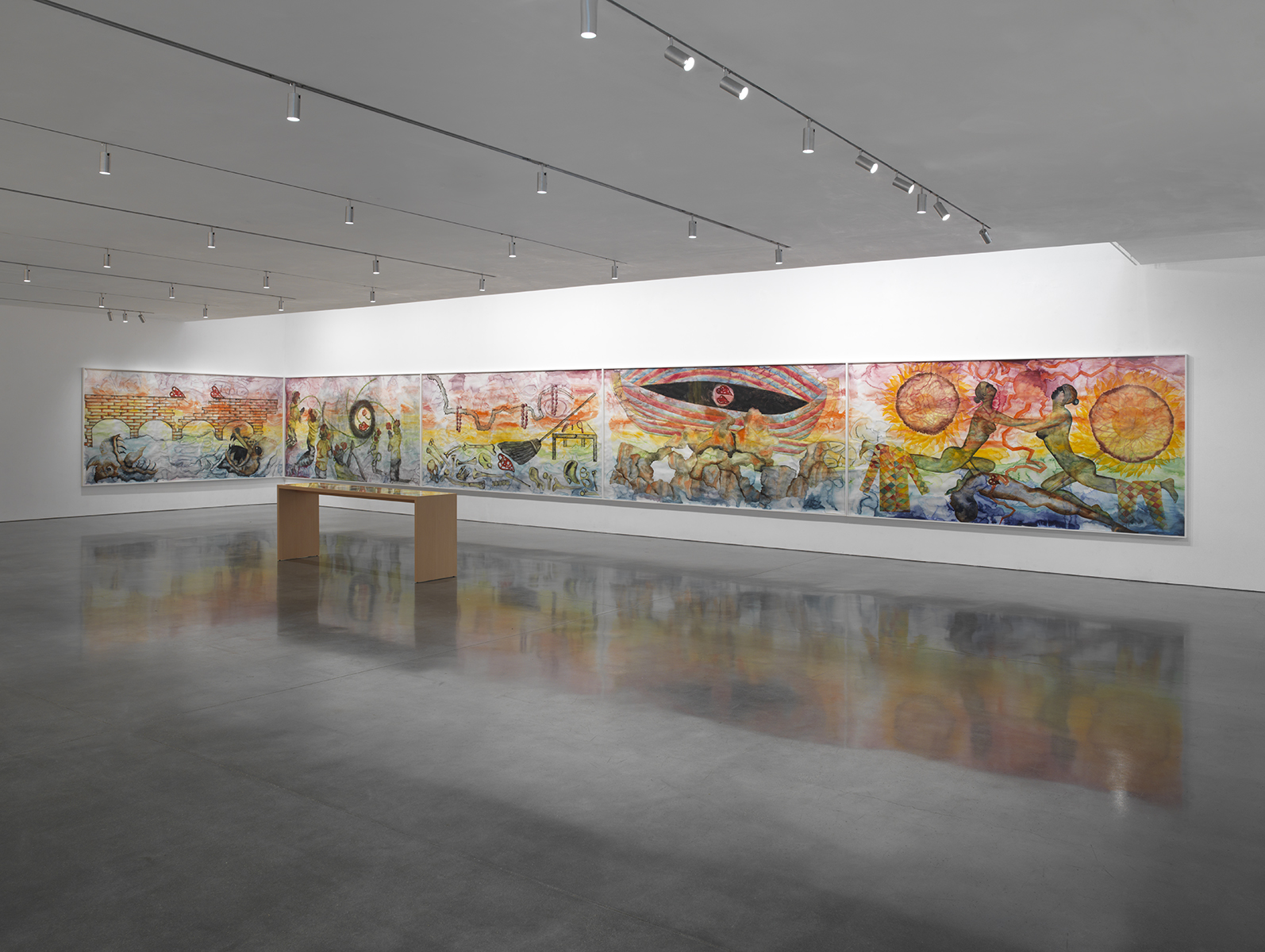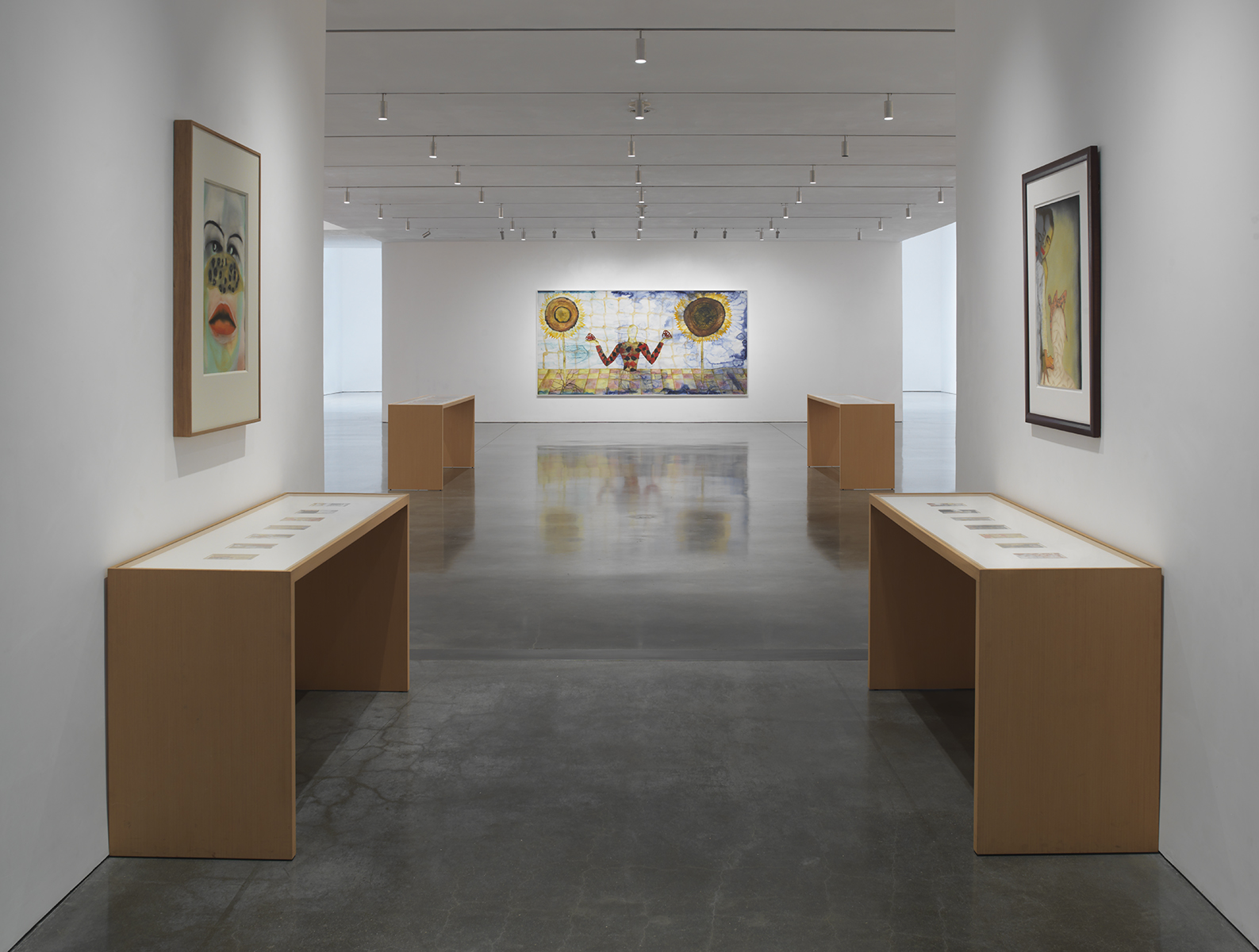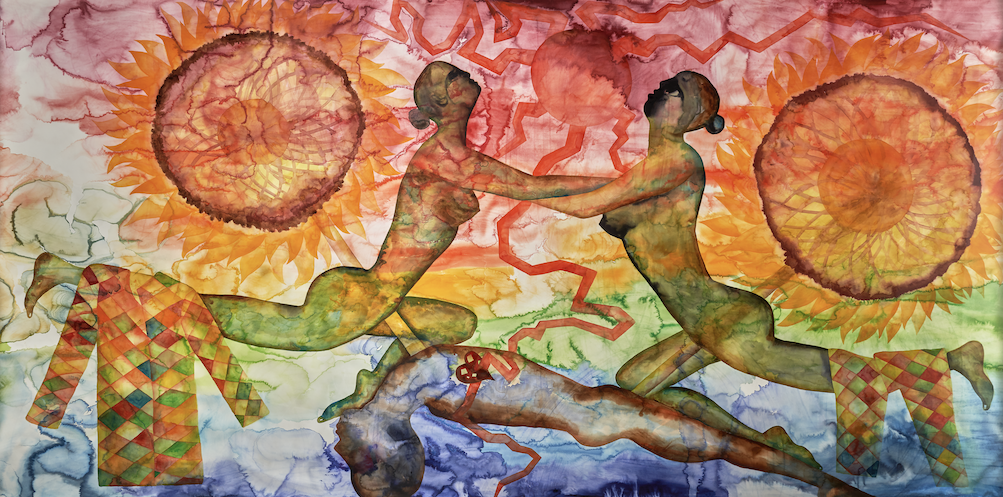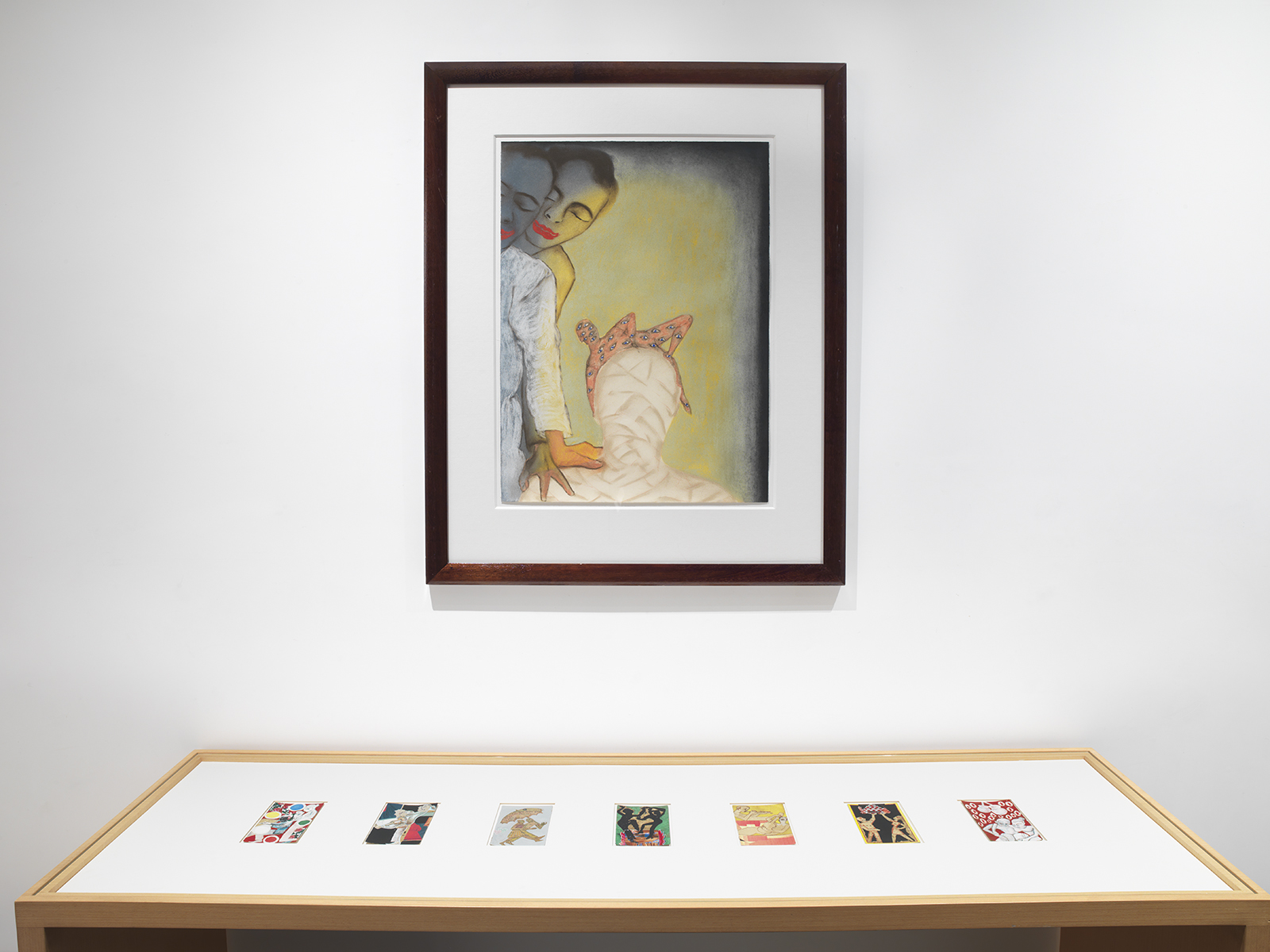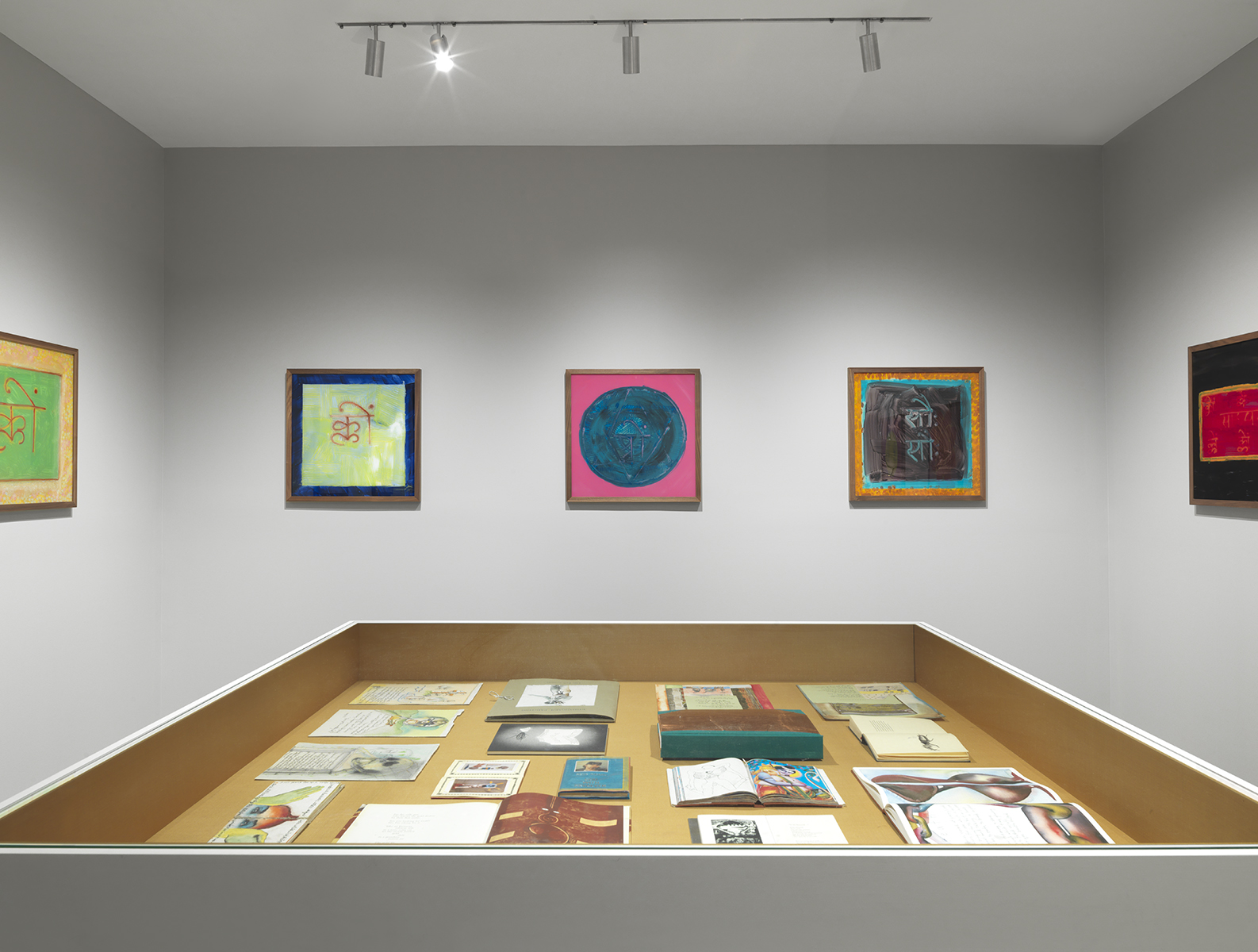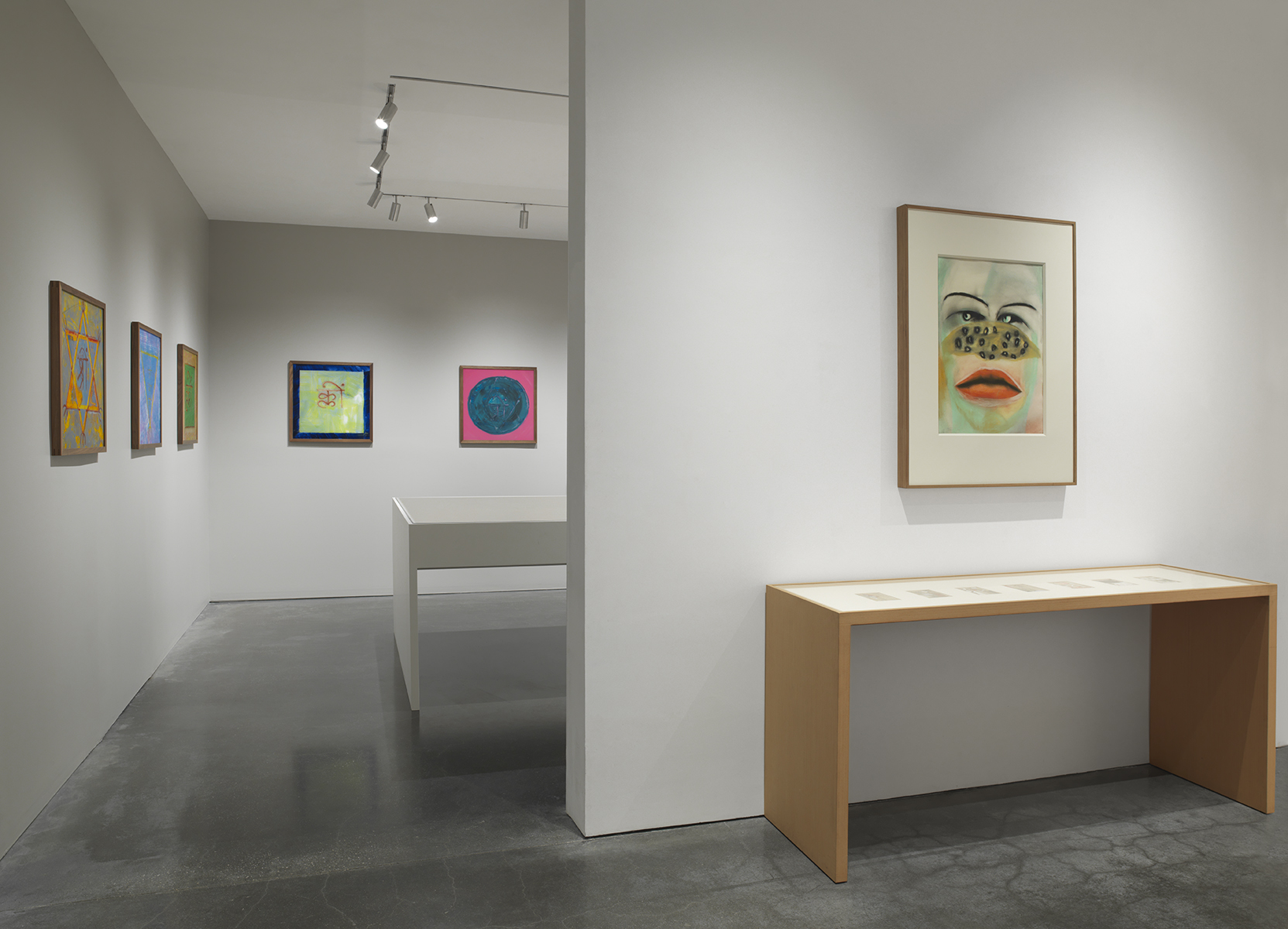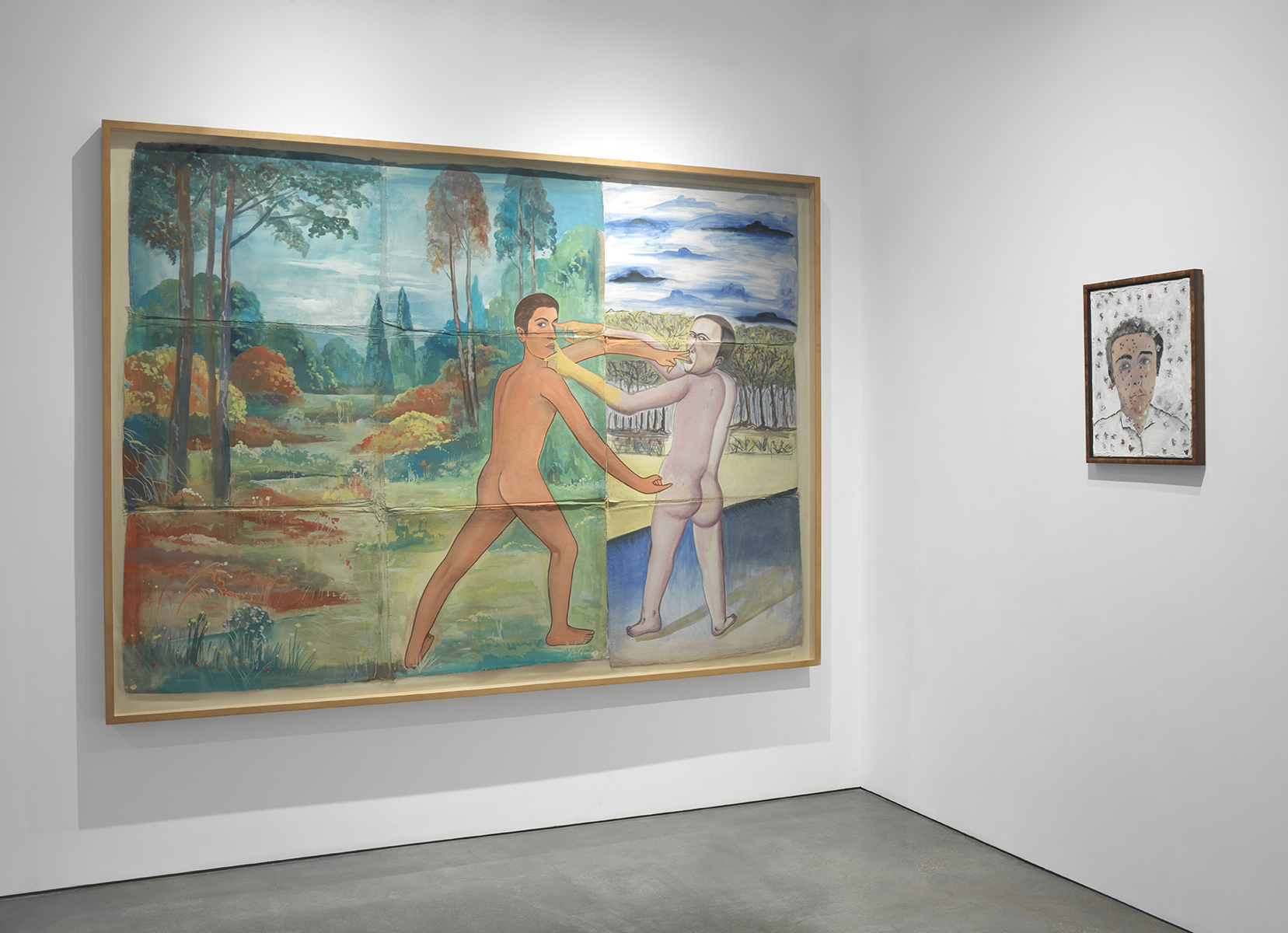Past Exhibition
- Francesco Clemente
Works 1978-2018
Greenwich November 12th to March 18th, 2019
FRANCESCO CLEMENTE
WORKS 1978-2018
The Brant Foundation Art Study Center is pleased to announce a survey of works by Francesco Clemente, on view from November 12, 2018 through March 2019. The exhibition brings together a concise but comprehensive selection spanning 40 years of the artist’s work including self-portraits and portraits, works on paper, frescoes, monumental oil and watercolor paintings, and one of the artist’s notable hand painted tents. Executed in Rome, New York, Taos, Varanasi, Jodhpur, Orissa, Pondicherry, and Madras, the works have traveled far and been dispersed among museum collections and art patrons. They now come together for Francesco Clemente: Works 1978–2018, each with its own story to tell. Non-chronological in nature, the exhibition interweaves threads that have been a constant in Clemente’s long-spanning oeuvre, and presents ideas and questions that persist throughout his various transformations in medium.
“Ideas divide, forms unite. In the search for form painters encounter beauty. If they are lucky,” says Clemente.
Francesco Clemente is a contemporary artist known for exploring metaphysical questions of spirituality, mysticism, and the nature of the self. Often erotic, and at times violent in its subject matter, Clemente’s lyrical, emotional approach is expressed by his unique sense of color. Strongly influenced by literature and poetry, Clemente is a poet in his own right, with a vast lexicon of symbolic and metaphorical imagery that expands and transforms to tell an open-ended story.
The Italian-born artist educated himself in the library of the Theosophical Society in Chennai (formerly Madras), India, where he studied Sanskrit and became acquainted with Hindu and Buddhist literature. Fascinated by the local culture and craftsmanship, he learned from and worked together with Indian papermakers, miniature painters, and sign painters.
During this time, Clemente created hundreds of works on paper in various sizes, and established his practice of working in series. One such series included in this exhibition is the Pondicherry Pastels (1979– 80), a group of 82 small works on paper depicting his daily life in the Sri Aurobindo Ashram. The exhibition will also feature Clemente’s definitive series, The Red Book (1989), created during the artist’s time in Orissa during this period. The series comprises 18 watercolors on handmade paper, celebrating the permanence of female power Clemente witnessed in the Indian and Tantric traditions.
Throughout his life, Clemente has returned to the theme of self-portraiture. The artist has portrayed himself as an ageless presence, at times twisted in difficult and improbable positions, at others seated peacefully in contemplation. Rejecting a psychological reading of his self-portraits, Clemente sees them as a meditation on the Buddhist view of the self as “continuity of discontinuity.” Francesco Clemente: Works 1978–2018 will include Self Portrait with Bird (1980) alongside portraits of Clemente’s artist and poet friends.
His most recent work includes a series of paintings on canvas (2015-16) featuring hearts and white flags, two of which are included in the exhibition. In one, Clemente embraces the white flag as a symbol of surrender as it pierces a striking image of a heart being picked apart, or maybe being restored to its integrity, by a flock of sparrows. In the second, a white flag rises from a sinking boat filled with hearts and surrounded by more boats carrying children’s toys, a Noah’s ark of innocence and love lost.
In addition to the recent flag works, The Brant Foundation will install a 12-foot by 18-foot tent made in 2013, fabricated in India by local tentmakers, with the inside walls and ceiling painted by Clemente. Each of Clemente’s tents is an inhabitable painting, which may be entered and experienced in the way of a contemporary chapel.
The tent on view will be surrounded by 15 of the artist’s recent watercolors painted in collaboration with miniature painters in Jodhpur. One set evokes a narrative of creation and origin in the form of an abstract, primeval egg surrounded by people, angels, animals, forests and cities painted in gold on blue in traditional miniature styles. Another set features a recurring image of a theater stage, red and pink curtains framing scenarios of fragility, chaos and loss, depicted in sensual and fluid colors.
About Francesco Clemente
Born in Naples in 1952, Francesco Clemente playfully says that he belongs to the last generation to fight the notion that capitalism is inevitable. Like many of his generation, he sympathized for those fighting the political and class system of 1970s Italy. At that time, Arte Povera was coming into prominence as a movement that stood against the institutional status quo, favoring conceptual strategies and the use of found objects and industrial materials over painting, which it considered to be obsolete.
Francesco Clemente met Joseph Beuys, who lived in Dusseldorf, in 1971, and observed and admired Cy Twombly, who lived in Rome, from afar. Schooled by Arte Povera artists like Mario Merz and Jannis Kounellis, Clemente became close to friend and mentor Alighiero Boetti in 1973. Together they traveled to Afghanistan, where Clemente was inspired by Boetti’s mode of working with local artisans and craftspeople. Clemente was drawn to the Eastern way of life, and he soon sought creative refuge and spiritual realization in India, moving there with his wife, Alba, a well-known theater actress whom he had met in Rome, in 1974.
In 1980, Clemente traveled to New York for his exhibition at Sperone Westwater Fischer gallery. Soon after, with Alba and their two daughters, he established a studio on a then deserted street in downtown Manhattan, where he works to this day. New York City in the 1980s proved to have a profound impact on Clemente’s artistic life. He collaborated with and befriended a wide range of dancers, poets, and painters in the city’s thriving art and literary scene. He worked on a series of collaborative paintings with Andy Warhol and Jean-Michel Basquiat, and created illuminated manuscripts with poets Allen Ginsberg, Robert Creeley, John Wieners, and Rene Ricard. He had met the poets, idols of his teenage years, through Raymond Foye, with whom he later published the Hanuman Books.
In the early years of the decade, he was considered a part of the Transavanguardia movement in Italy, and its American equivalent, Neo-Expressionism, in New York. Artists like Julian Schnabel, Anselm Kiefer, Enzo Cucchi, and Jean-Michel Basquiat were known for a “return to figuration,” moving away from the minimalist and conceptual modes dominant at the time, in exchange for painting and expressive symbolic imagery.
Clemente chronicled the many fascinating personalities he met during this time through portraiture, achieving the distinctive style for which he became well recognized. The popularity of his portraits led to his participation in the 1998 film Great Expectations, directed by Alfonso Cuarón, for which he created more than 100 works on paper and portraits on canvas that were a critical element in the storyline. The following year, Clemente had a major retrospective at the Solomon R. Guggenheim Museum, New York, which traveled to the Guggenheim Museum Bilbao in 2000.
Today, Clemente is reluctant to be linked to any specific movement, and though he credits his development to his relationships with many artists, he views himself as a nomadic artist. He is fascinated by the continuous exchange between the East and West, particularly between India and America, which goes as far back as the nineteenth century, when Ralph Waldo Emerson and Henry David Thoreau read the Bhagavad Gita.
Clemente delights in depicting the grotesque as sublime, and the sublime as grotesque. The two values are interchangeable in his visual language: his graphic depictions of sexuality, violence, explicit male and female figures, and bodily functions are executed vividly, without judgment, and in a spirit of celebration. These depictions are intended to witness the essential harmony and the transcendent nature of reality, a testament to Clemente’s assertion that to the eye of a painter, the world is perfect.
Selected Exhibitions
In 1980, Clemente was selected to exhibit at the Venice Biennale’s first Aperto, a section that displayed the works of emerging young artists. In 1985, Michael Auping curated an exhibition of Clemente’s work at the John and Mable Ringling Museum of Art, in Florida. The exhibition subsequently traveled to the Walker Art Center, Minneapolis, the Dallas Museum of Art, the University Art Museum, Berkeley, and the Albright-Knox Art Gallery, Buffalo, ending at the Museum of Contemporary Art, Los Angeles in 1987. He also exhibited his work at venues including the Institute of Contemporary Art, Boston, the Metropolitan Museum of Art, the Art Institute of Chicago, Dia Art Foundation, and the National Gallery in Berlin, in a show that later traveled to the Stedelijk Museum Amsterdam and other venues in Germany. In 1990, his exhibition Three Worlds opened at the Philadelphia Museum of Art; it continued to the Wadsworth Atheneum, Hartford, Connecticut, the San Francisco Museum of Modern Art, and the Royal Academy of Arts, London, in 1991. After the Guggenheim retrospective in New York and Bilbao, other notable exhibitions in the 2000s included shows at the Irish Museum of Modern Art, Dublin, Museo MADRE, Naples, and the Schirn Kunsthalle, Frankfurt. In 2011, The Uffizi Gallery, Florence, presented an exhibition of self-portraits and the artist’s version of the tarot deck. The Uffizi went on to acquire one of his self-portraits, now on view in the Vasari Corridor. Six of Clemente’s tents were shown in Encampment at MASS MoCA, Williamstown, in 2015, and the exhibition later traveled to Carriageworks in Sydney. The Spring Arts Center, Beijing, showed his large murals in 2016.
Francesco Clemente Exhibition Announcement
Francesco Clemente Exhibition Opening
Francesco Clemente Evening Hours
Yoga Inspired by Francesco Clemente
The Brant Foundation Library: Francesco Clemente
Artist Biography
Francesco Clemente
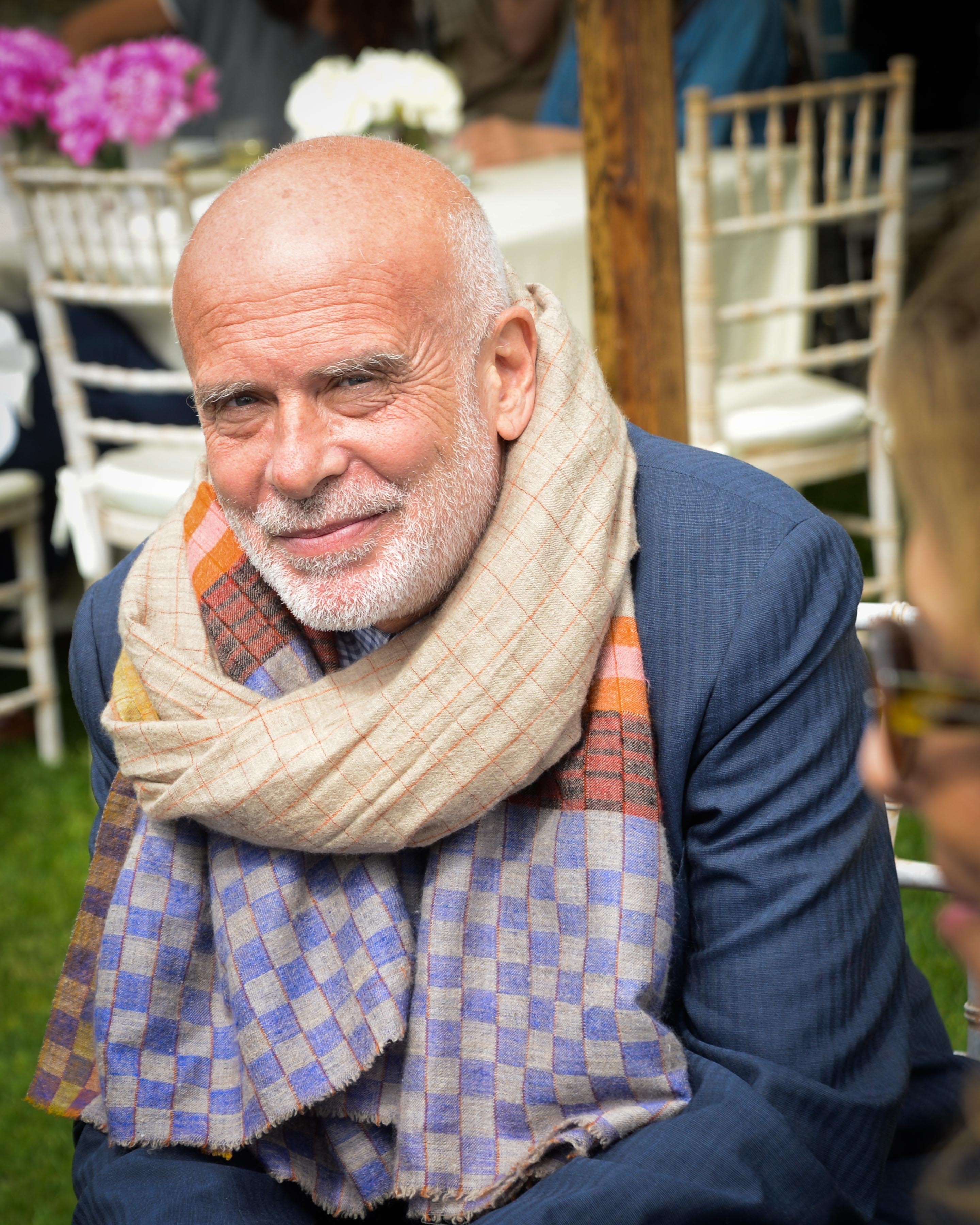
Francesco Clemente is a contemporary artist who is known for exploring metaphysical questions of spirituality, mysticism, and the nature of the self. Often erotic, and at times violent in its subject matter, Clemente’s lyrical, emotional approach is expressed by his unique sense of color. Strongly influenced by literature and poetry, Clemente is a poet in his own right, with a vast lexicon of symbolic and metaphorical imagery that expands and transforms to tell an open-ended story.
Clemente’s personal history is essential to understand his role as a contemporary painter. Born in Naples in 1952, the aspiring artist, like many of his generation, became frustrated by the political and class system of 1970’s Italy. He belonged to the last generation to fight the notion that capitalism is inevitable. Coming into prominence in the Italian art scene at the time was Arte Povera, a movement that made statements against the institutional status quo and thought of painting as obsolete. Arte Povera favored conceptual process and the use of found objects and industrial materials.
Clemente was schooled by Arte Povera artists like Mario Merz and Jannis Kounnelis but became close to friend and mentor Alighiero Boetti in 1973. Together they travelled to Afghanistan where he observed and was inspired by Boetti’s mode of working with Afghani artisans and craftsmen. Clemente was drawn to the eastern way of life, and he soon sought creative refuge and spiritual realization in India, moving there with his wife, Alba, a well known theater actress whom he had met in Rome in 1974.
Clemente educated himself in the library of the Theosophical Society in Chennai, formerly Madras. There he studied Sanskrit and became acquainted with Hindu and Buddhist literature. He was fascinated with the local culture and craftsmanship, learning from and working together with Indian papermakers, miniature painters and sign painters. During this time, Clemente created hundreds of works on paper in various sizes, and established his practice of working in series. One such series included in the Brant Foundation exhibition is the Pondicherry Pastels, a group of 82 small works on paper depicting his inner and outer life in the Aurobindo Ashram. For another series, Passports, Clemente painted on a monumental scale, gluing together several pieces of handmade Pondicherry paper with handwoven Khadi cotton strips to create billboard-sized works with vibrant representations of subject matter inspired by eastern cosmologies, particularly Samkya enumerations of the five senses, the five elements, planets and functions of the body. He would fold and carry the enormous works by hand on his flights back from India.
In the early 80’s, Clemente was initially considered a part of the Transavanguardia movement in Italy and of Neo- Expressionism in New York. Artists like Julian Schnabel, Anselm Kiefer, Enzo Cucchi and Jean Michel Basquiat were known for a ‘return to figuration’, moving away from the minimalist and conceptual modes of work dominant at the time, in exchange for painting and expressive symbolic imagery.
Today Clemente is reluctant to be linked to any specific artistic movement, and though he credits his closeness to many artists for their contribution to his development, Clemente would rather see himself as a nomadic artist. He is fascinated by the continuous exchange between the East and West, particularly between America and India, an exchange which goes as far back as the 19th century when Ralph Waldo Emerson and Henry David Thoreau read the Bhagavad Gita.
In 1981, Francesco Clemente travelled to New York from India for his exhibition at Sperone Westwater and Fisher Gallery. After witnessing the creative drive of the city, he soon relocated to New York with his wife and two daughters, and established a studio in a then deserted street in downtown Manhattan, where he works to this day.
New York City in the 1980’s proved to have a profound impact on Clemente’s artistic life. He collaborated with and befriended a wide range of dancers, poets and painters in the city’s thriving art and literary scene. He worked on a series of collaborative paintings with Andy Warhol and Jean- Michel Basquiat, and created illuminated manuscripts with poets Allen Ginsberg, Robert Creeley, John Weiners, and Rene Ricard. He had met the poets, idols of his teenage years, through Raymond Foye, with whom he later published the Hanuman Books. He began painting in oil on a large scale, and created a group of works titled Fourteen Stations, which was shown by Nick Serota at the Whitechapel Gallery in London in 1983. He continued to return to India on a regular basis, producing defining works such as the Red Book and the White Book, watercolors that celebrate the female power and the Black Book, a group of extreme erotic images inspired by the Temple Sculptures in Konarak.
In the spring of 1985, Clemente had three simultaneous gallery shows in New York at Sperone Westwater Gallery, Leo Castelli Gallery, and Mary Boone Gallery. Also that year, Michael Auping curated an exhibition of Francesco Clemente at the John and Mable Ringling Museum of Art in Florida, which travelled to the Walker Art Center in Minneapolis, the Dallas Museum of Art, the University Art Museum at UC Berkeley, the Albright-Knox Art Gallery in Buffalo, and ended with the Museum of Contemporary Art in Los Angeles in 1987. He also exhibited his work at the Institute of Contemporary Art in Boston in 1984, the Metropolitan Museum of Art in 1985, the Art Institute of Chicago in 1987, and Dia Art Foundation in 1988, among others. Clemente exhibited internationally at the National Galerie Berlin in 1984, which later traveled to Stedelijk Museum in Amsterdam and other venues in Germany. In 1990, his exhibition Three Worlds opened at the Philadelphia Museum of Art, continuing to Wadsworth Atheneum, Hartford, Connecticut, San Francisco Museum of Modern Art and the Royal Academy of Arts in in London in 1991.
Clemente chronicled the many fascinating personalities he met during this time through portraiture, achieving a unique and distinct style of rendering faces that he became well recognized for. The popularity of his portraits lead to Clemente’s participation in the film Great Expectations, directed by Alfonso Cuaron in 1998. The artist created more than one hundred works on paper and portraits on canvas of actors that were a critical element in the storyline.
The following year, Francesco had a major retrospective at the Guggenheim museum in New York curated by Lisa Dennison and Tom Krens, which travelled to Guggenheim Bilbao in 2000. Notable exhibitions in the 2000’s included the Irish Museum of Modern Art in Dublin, at the Museo MADRE, Naples and the Schirn Kunsthalle, Frankfurt. An exhibition of self-portraits and Clemente’s watercolor version of the Tarot deck was held at the Uffizi Gallery, Florence in 2011. The Uffizi acquired and exhibits a self-portrait in the Vasari Corridor.
Clemente has worked in a wide range of mediums, including watercolor, pastel, oil, fresco, tempera, charcoal, sculpture, in a great variety of sizes and formats.
Clemente’s has returned to self-portraiture throughout his life. The artist has portrayed himself as an ageless presence, at times twisted in difficult and improbable positions, at other times sitting in peaceful and meditative ones. He states that the self-portraits are a meditation on the Buddhist notion of the self as ‘continuity of discontinuity’.
Clemente delights in depicting the grotesque as sublime, and the sublime as grotesque. The two values are interchangeable in his visual language. His graphic depictions of sexuality, violence, explicit male and female figures, and bodily functions are executed vividly, without judgment, and in a spirit of celebration. These depictions are intended to witness the essential harmony and the transcendent nature of reality. Clemente claims that to the eye of a painter, the world is perfect.
Clemente’s most recent work includes a series of oil on canvas paintings featuring broken hearts and white flags, a series of black flags against a blue sky (painted on the eve of the last presidential election), a series of enormous murals made in Beijing, and an elegiac group of paintings inspired by the poetry of Federico Garcia Lorca in New York. He continues to collaborate with Indian miniature painters every year, creating sets of intricate and exquisite watercolors.
In 2015, Clemente exhibited a group of six painted and embroidered tents, along with watercolors and sculpture, at Mass MoCA. The tents, 12 feet by 18 feet, were fabricated in India with local tentmakers, and the inside walls and ceilings were painted by Clemente. Each tent is an inhabitable painting, which may be entered and experienced in the way of a contemporary chapel. The exhibition later went to Carriageworks, Sydney, Australia, and the tents have been shown separately in Berlin and New York.
Francesco Clemente’s exhibition at the Brant Foundation is a concise but exhaustive retrospective that will feature his work from 1978 until 2018, marking 40 years of the artist’s life. The show is non- chronological, weaving together threads that have been a constant in Clemente’s long-spanning oeuvre, and presenting ideas and questions that persist for the artist throughout various transformations in medium. The exhibition includes self-portraits, portraits, multiple series of work on paper in watercolor and pastel, frescoes, several monumental oil paintings, and one tent. Executed in Rome, Varanasi, Jodhpur, Orissa, Pondicherry, Madras, New York, and Taos over the last four decades, the works have travelled far and been dispersed among museum collections and art patrons who have been a part of Clemente’s history. They now return for Francesco Clemente: 1978- 2018, each work with its own story to tell.
Francesco Clemente at The Brant Foundation:
Remembering Henry’s Show Exhibition Page
Remembering Henry’s Show Exhibition Catalogue
SOLO
| 1975 |
Gian Enzo Sperone, Rome, Italy |
| 1976 |
Gian Enzo Sperone, Rome, Italy |
| 1977 |
Poala Betti, Milan, Italy |
| 1978 |
Centre d’Art Contemporain, Geneva, Switzerland. Art and Project, Amsterdam, The Netherlands. |
| 1979 |
Art and Project, Amsterdam, The Netherlands. Lisson Gallery, London, England. Gian Enzo Sperone, Turin, Italy. |
| 1980 |
Art and Project, Amsterdam, The Netherlands. Gian Enzo Sperone, Rome, Italy. |
| 1981 |
Museum van Hedendaagse Kunst, Ghent, Belgium. Bruno Bischofberger Gallery, Zurich, Switzerland. “Francesco Clemente/Matrix 46”, University Art Museum, University of California, Berkeley, California. |
| 1982 |
“Francesco Clemente/Matrix 70”, Wadsworth Atheneum, Hartford, Connecticut. Bruno Bischofberger Gallery, Zurich, Switzerland. |
| 1983 |
“Francesco Clemente: The Fourteen Stations”, Whitechapel Art Gallery, London, England. Mary Boone Gallery, NYC, NY. |
| 1984 |
Bruno Bischofberger Gallery, Zurich, Switzerland. “Pastelles”, Nationalgalerie, Berlin, West Germany. “Pastelles”, Stedelijk Museum, Amsterdam, The Netherlands. “Pastelles”, Fruitmarket Gallery, Edinburgh, Scotland. Kunsthalle Basel, Basel, West Germany. |
| 1985 |
Mary Boone Gallery, NYC, NY. The Metropolitan Museum of Art, NYC, NY. |
| 1986 |
The Museum of Modern Art, NYC, NY. |
| 1987 |
Museum für Gegenwartskunst, Basel, Switzerland. The Art Institute of Chicago, Chicago, Illinois. Fundación Caja de Pensiones, Madrid, Spain. |
| 1988 |
Milwaukee Art Museum, Milwaukee, Wisconsin. Museum of Contemporary Art, Chicago, Illinois. Dia Art Foundation, NYC, NY. |
| 1989 |
Dia Art Foundation, Bridgehampton, New York. |
| 1990 |
Philadelphia Museum of Art, Philadelphia, Pennsylvania. |
| 1991 |
Wadsworth Atheneum, Hartford, Connecticut. San Francisco Museum of Modern Art, San Francisco, California. Royal Academy of Arts, London, England. Kunstmuseum Basel, Basel, Switzerland. Museum für Moderne Kunst, Frankfurt, Germany. |
| 1994 |
Sezon Museum, Tokyo, Japan. Musée national de l’art moderne, Centre Georges Pompidou, Paris, France. |
| 1995 |
Museum für Moderne Kunst, Frankfurt, Germany. |
| 1997 |
The Andy Warhol Museum, Pittsburgh, Pennsylvania. The Metropolitan Museum of Art, NYC, NY. |
| 1998 |
Modern Art Museum of Fort Worth, Fort Worth, Texas. Indianapolis Museum of Art, Indianapolis, Indiana. |
| 1999 |
Galleria d’arte Moderne, Bologna, Italy. Solomon R. Guggenheim Museum, NYC, NY. |
| 2000 |
Guggenheim Museum Bilbao, Bilbao, Spain. |
| 2002 |
Museo Archeologico Nazionale di Napoli, Naples, Italy. |
| 2004 |
Irish Museum of Modern Art, Dublin, Ireland. |
| 2007 |
“Portraits”, Mary Boone Gallery, NYC, NY. |
| 2008 |
“The Sopranos”, The Arnold and Marie Schwartz Gallery Met, Metropolitan Opera House, Lincoln Center, NYC, NY. |
| 2009 |
“Francesco Clemente: A History of the Heart in Three Rainbows”, Deitch Projects, NYC, NY. “Francesco Clemente: Shipwreck with the Spectator 1974-2004”, Museo Madre, Naples, Italy. “Jigsaw Puzzle Pastels et Aquarelles”, Galerie Thaddaeus Ropac, Paris, France. |
| 2010 |
“A Private Geography”, Mary Boone Gallery, NYC, NY. “Captive Pleasures”, Galerie Bruno Bischofberger, Zurich, Switzerland. |
| 2011 |
“Francesco Clemente: Palimpsest”, Schirn Kunsthalle, Frankfurt, Germany. “Francesco Clemente: The Tarot”, Uffizi Gallery, Florence, Italy. |
| 2012 |
“Nostalgia/Utopia”, Mary Boone Gallery, NYC, NY. “Mandala for Crusoe”, Blain/Southern, London, England. |
| 2013 |
“Clemente > Brazil > Yale”, Yale School of Art, New Haven, Connecticut. “Francesco Clemente: Portraits of the 1980s”, Thomas Ammann Fine Art, Zurich, Switzerland. “Francesco Clemente: Tents”, Blain Southern, Berlin, Germany. |
| 2014 |
“Francesco Clemente: Inspired by India”, Rubin Museum of Art, NYC, NY. “Two Tents”, Mary Boone Gallery, NYC, NY. |
| 2015 |
“Emblems of Transformation”, Blain/Southern, London, England. “Francesco Clemente: Encampment”, MASS MoCA, North Adams, Massachusetts. Le Musée Territorial de Saint Barthélemy, Gustavia, Saint Barthélemy. |
| 2016 |
“Winter Flowers and the Tree of Life”, Complesso Museale Santa Maria della Scala, Siena, Italy. “Francesco Clemente: Encampment”, Carriageworks, Eveleigh, Australia. “A Nomadic Life: Francesco Clemente in China”, Springs Art Center, Beijing, China. “Francesco Clemente: After Omeros”, Coro della Maddalena, Alba, Italy. Jablonka Maruani Mercier Gallery, Brussels, Belgium. “Francesco Clemente: Dormiveglia”, NSU Art Museum Fort Lauderdale, Fort Lauderdale, Florida. |
GROUP
| 1975 |
“XII Biennale”, Sao Paolo, Brazil. |
| 1977 |
“Tenth Biennale de Paris”, Musée d’Art Moderne, Paris, France. |
| 1979 |
“Europa 79”, Kunstaustellungen Gutenbergstrasse, Stuttgart, West |
| 1980 |
“Aperto ‘80”, La Biennale di Venezia, Venice, Italy. |
| 1981 |
“Westkunst”, Rheinhallen der Kolner Messe, Koln, West Germany. “Figures: Forms and Expressions”, Albright-Knox Art Gallery/CEPA |
| 1982 |
“Issues: New Allegory I”, Institute of Contemporary Art, Boston, |
| 1983 |
“Acquisition Priorities: Aspects of Postwar Painting”, Solomon R. Guggenheim Museum, NYC, NY. |
| 1984 |
“Polke, Salle, Clemente”, The Contemporary Art Gallery, Seibu Museum, |
| 1985 |
“La Nouvelle Biennale de Paris”, Grande Halle du Parc de la |
| 1986 |
“In Tandem”, Whitechapel Art Gallery, London, England. |
| 1987 |
“Avant-Garde in the Eighties”, Los Angeles County Museum of Art, |
| 1988 |
“Aperto ‘88”, La Biennale di Venzia, Venice, Italy. |
| 1991 |
“Zeichnungen des 20 Jahrhunderts”, Kunstmuseum Basel, Basel, |
| 1992 |
“Allegories of Modernism: Contemporary Drawing”, The Museum of Modern |
| 1993 |
“Der Zerbrochene Spiegel”, Museumsquartier and Kunsthalle Wien, |
| 1995 |
“Szenenwechsel”, Museum für Moderne Kunst, Frankfurt, Germany. “Identità e alterità”, La Biennale di Venezia, Venice, Italy. |
| 1996 |
“Collaborations: Warhol, Basquiat, Clemente”, Museum Fridericianum, Kassel, Germany. |
| 1998 |
“Transavanguardia”, Museum Würth, Künzelsau, Germany. |
| 2006 |
“Radar: Works from the Kent and Vicki Logan Collection”, Denver Art Museum, Denver, Colorado. |
| 1009 |
“A Tribute to Ron Warren”, Mary Boone Gallery, NYC, NY. |
| 2010 |
"Your History is Not Our History”, Haunch of Venison, NYC, NY. |
| 2012 |
“Don’t Be Shy, Don’t Hold Back: The Logan Collection at SFMOMA”, San Francisco Museum of Modern Art, San Francisco, California. |
| 2014 |
“Imaginary Portraits/Prince Igor”, The Arnold and Marie Schwartz Gallery Met, Metropolitan Opera House, Lincoln Center, NYC, NY. “Urban Theater: New York Art in the 1980s”, Modern Art Museum of Fort |
| 2015 |
“Artists for the Met”, The Arnold and Marie Schwartz Gallery Met, |
| 2016 |
“Language of the Birds: Occult and Art”, 80WSE Gallery, New York |
